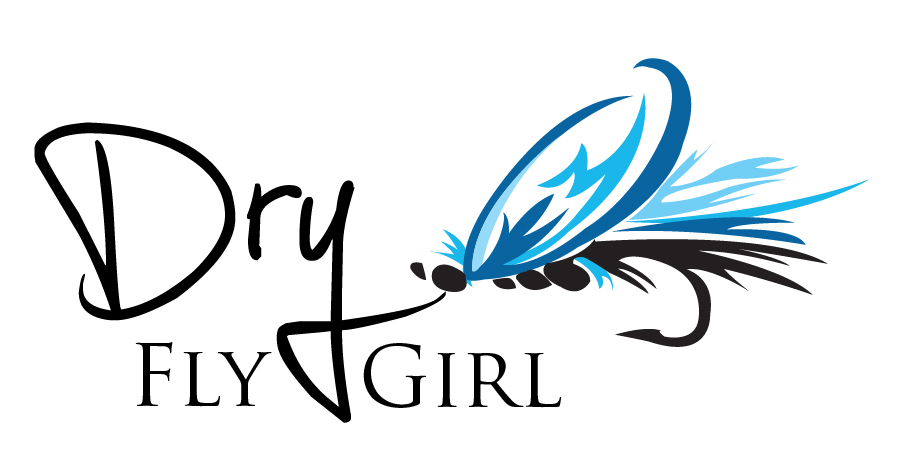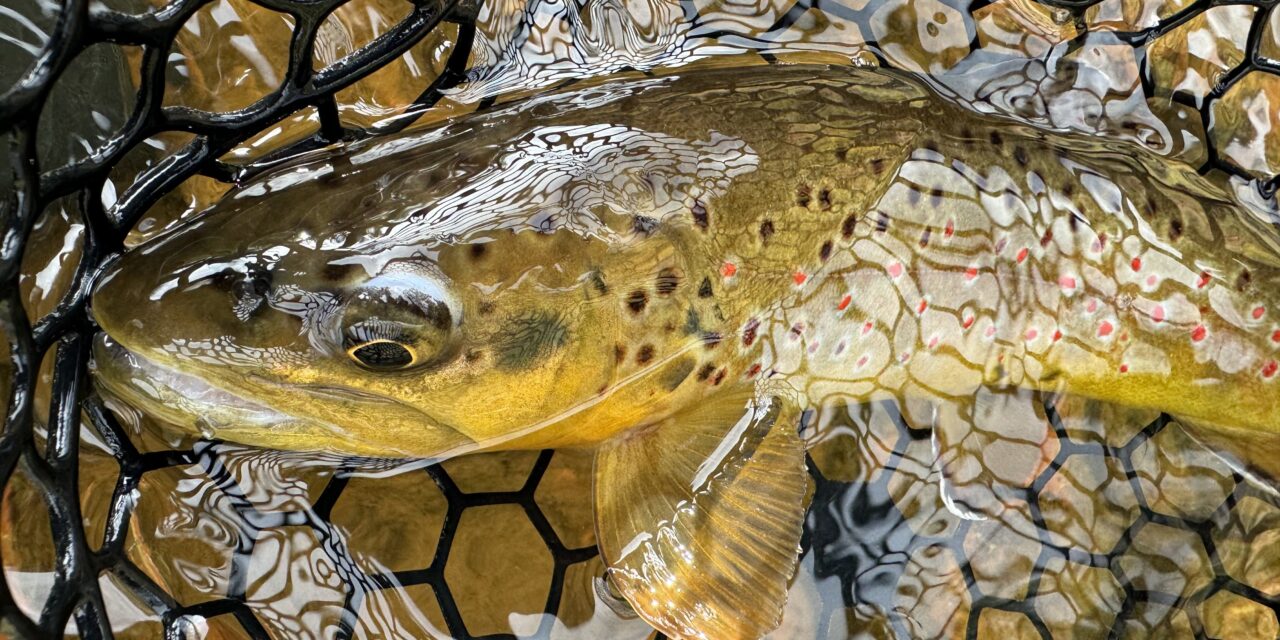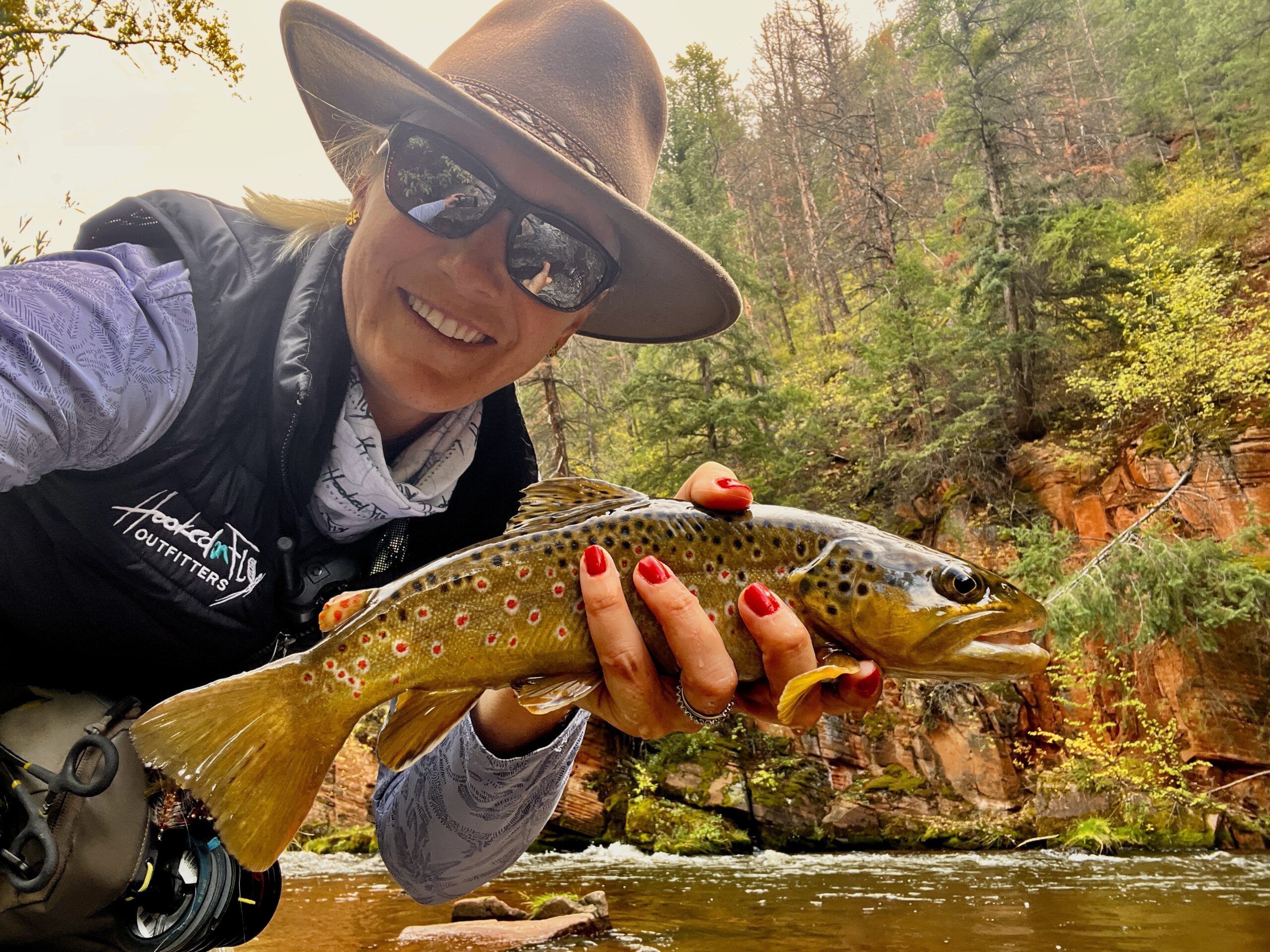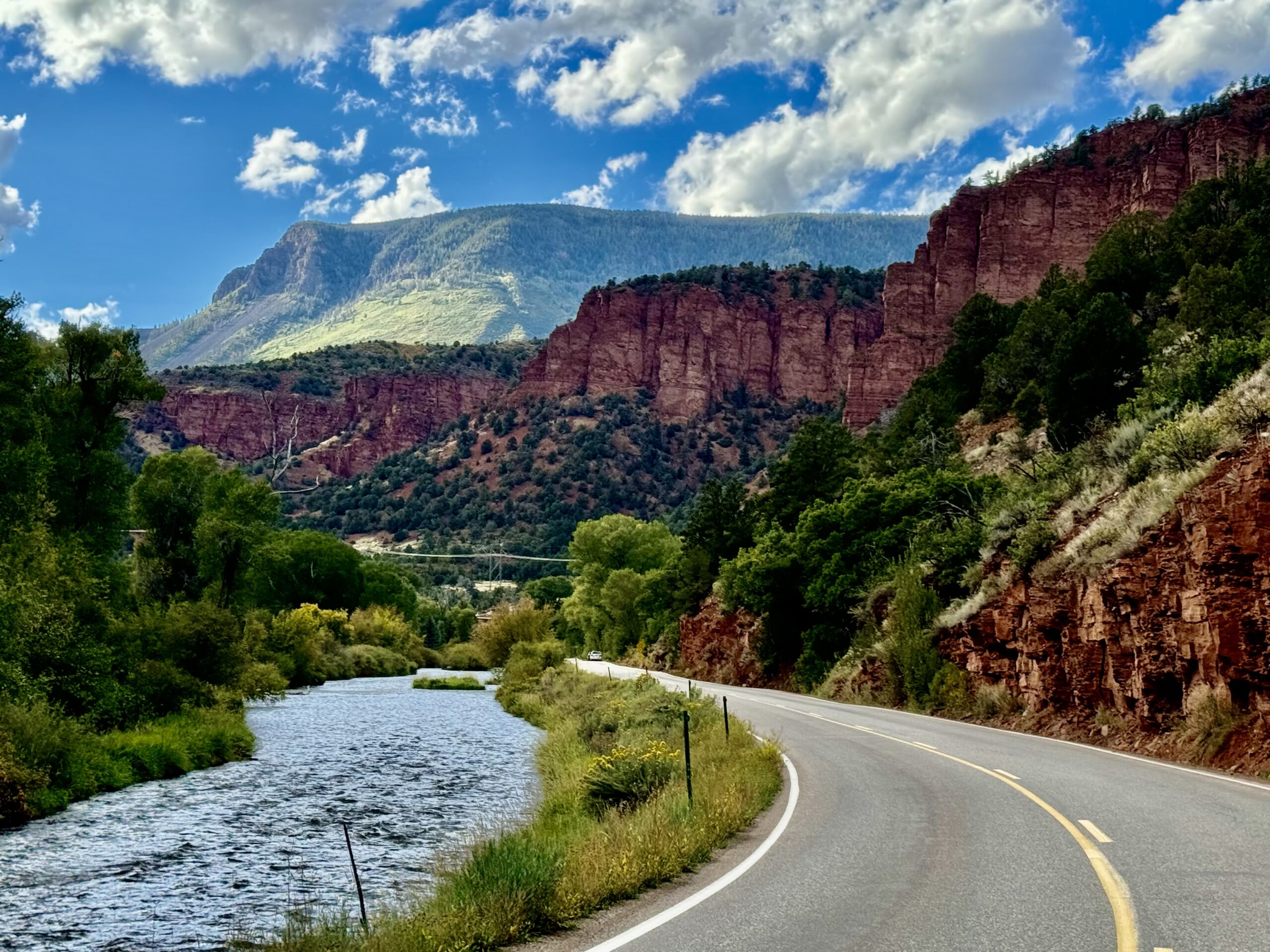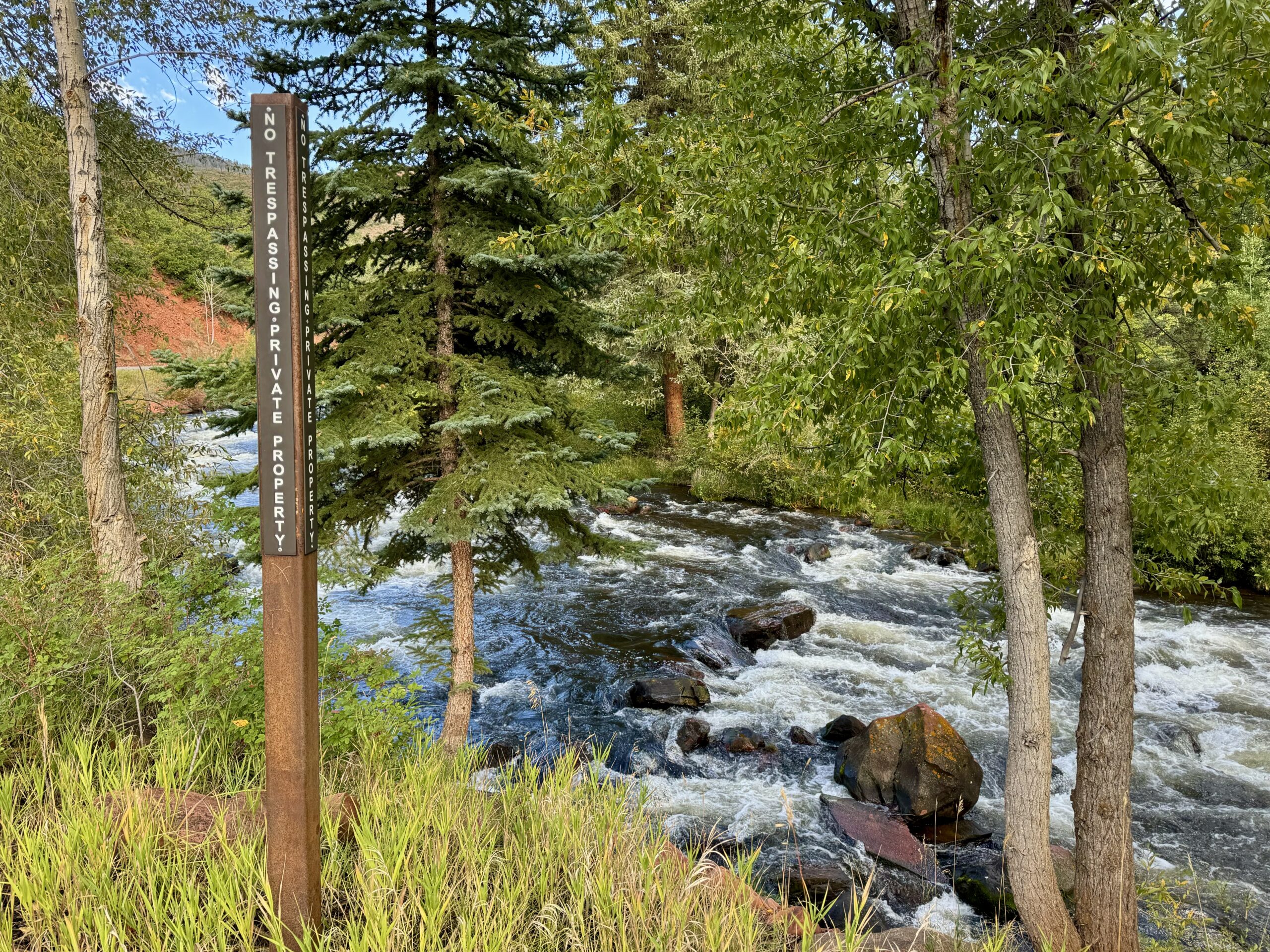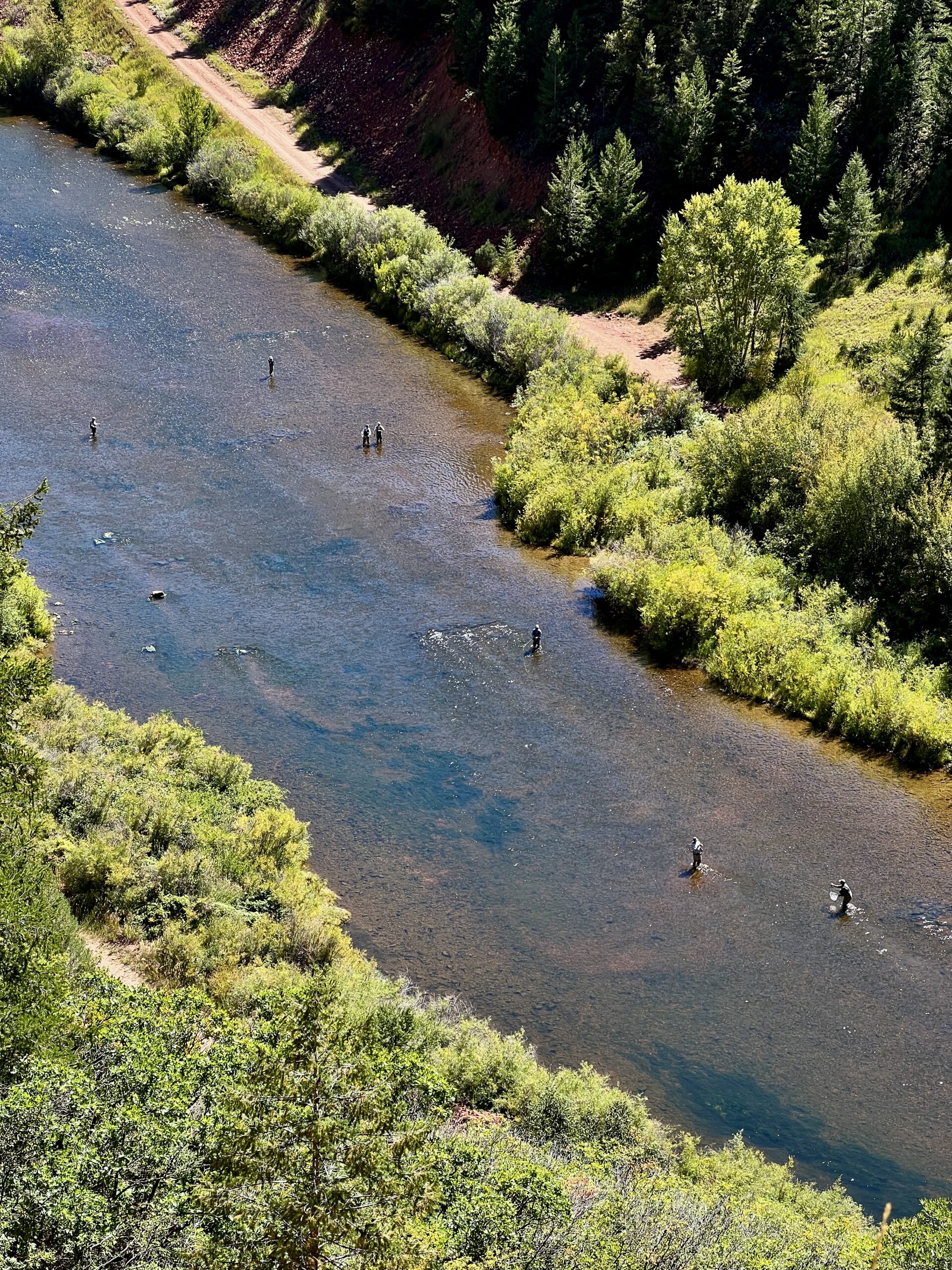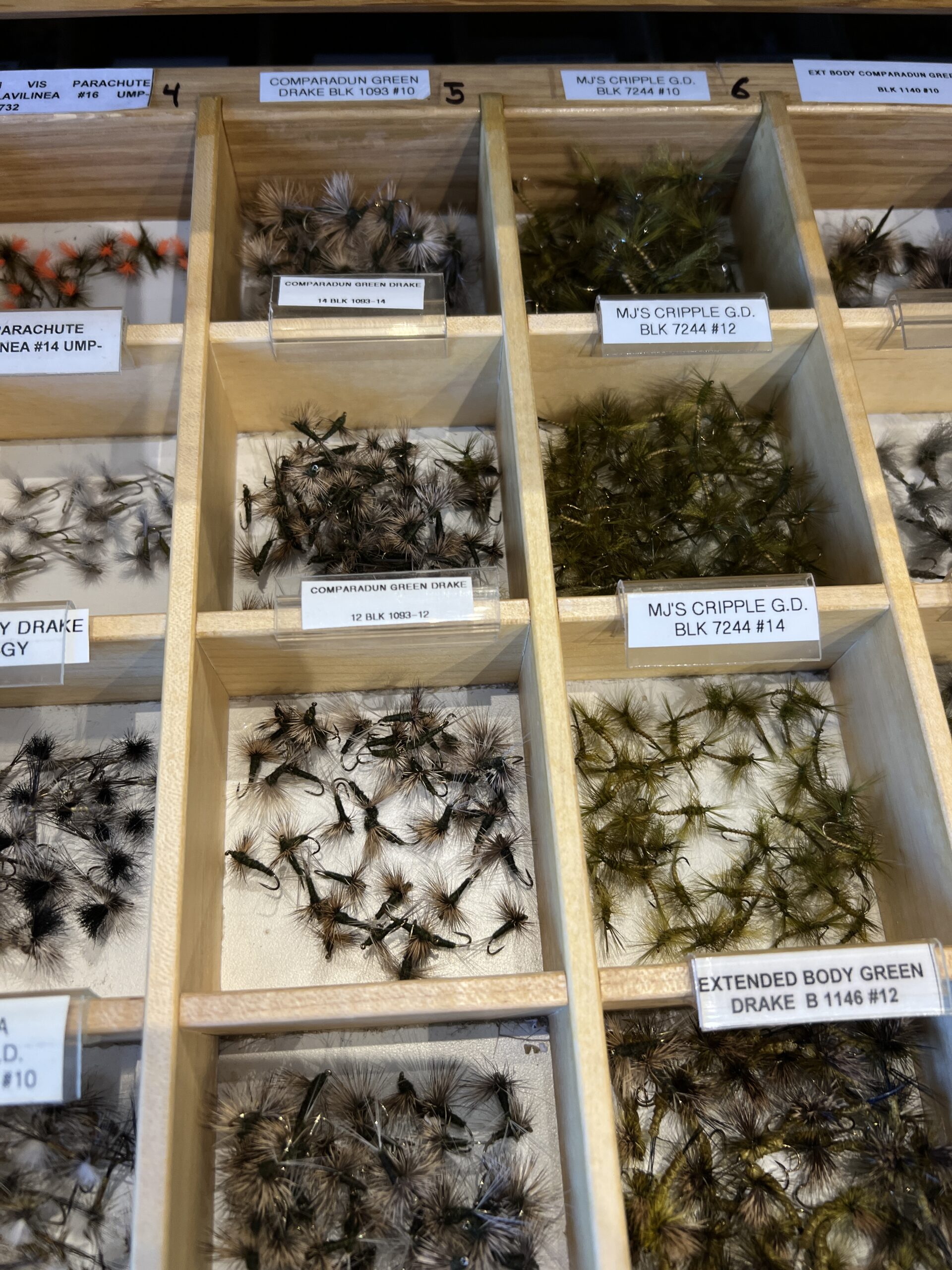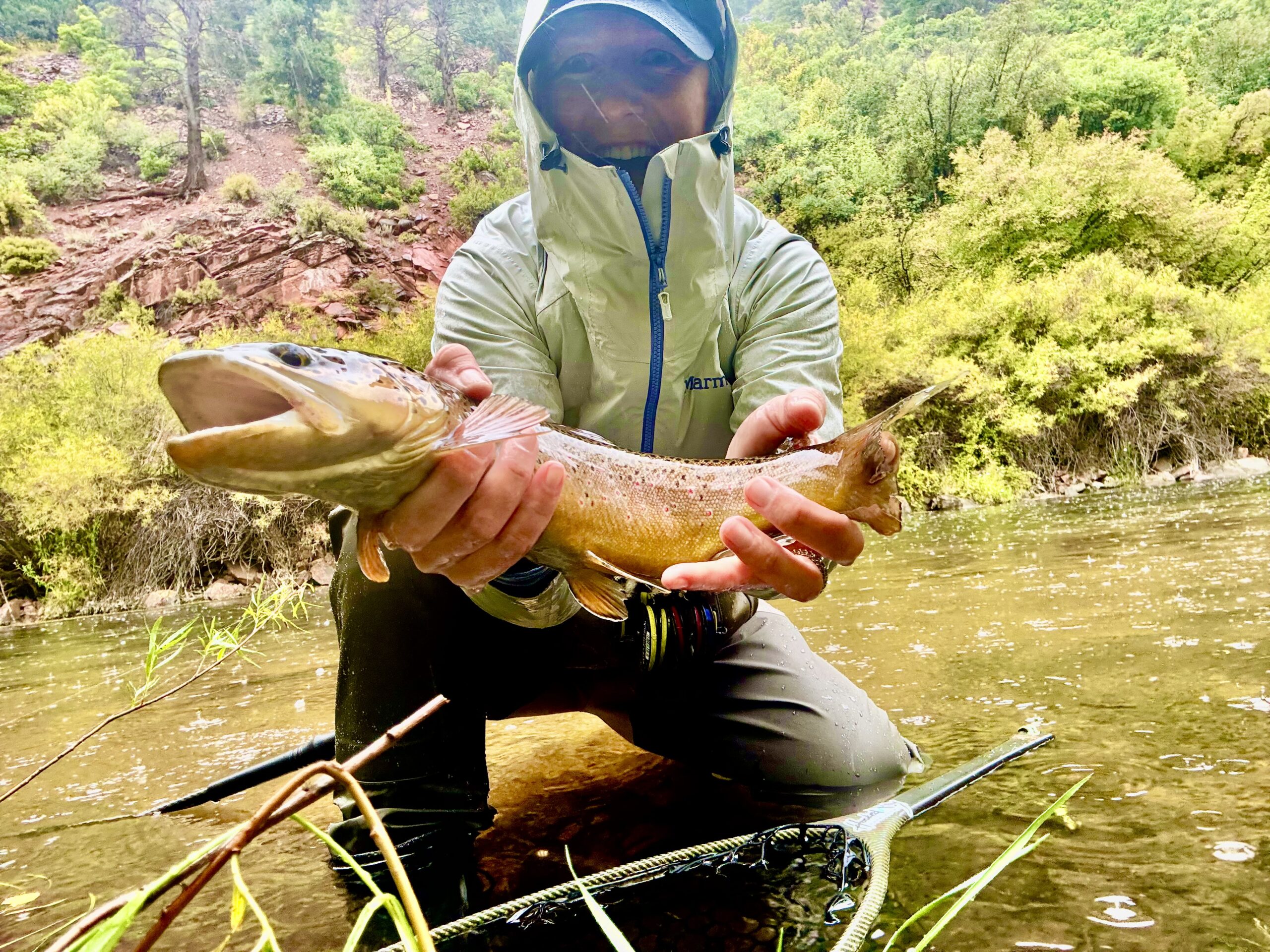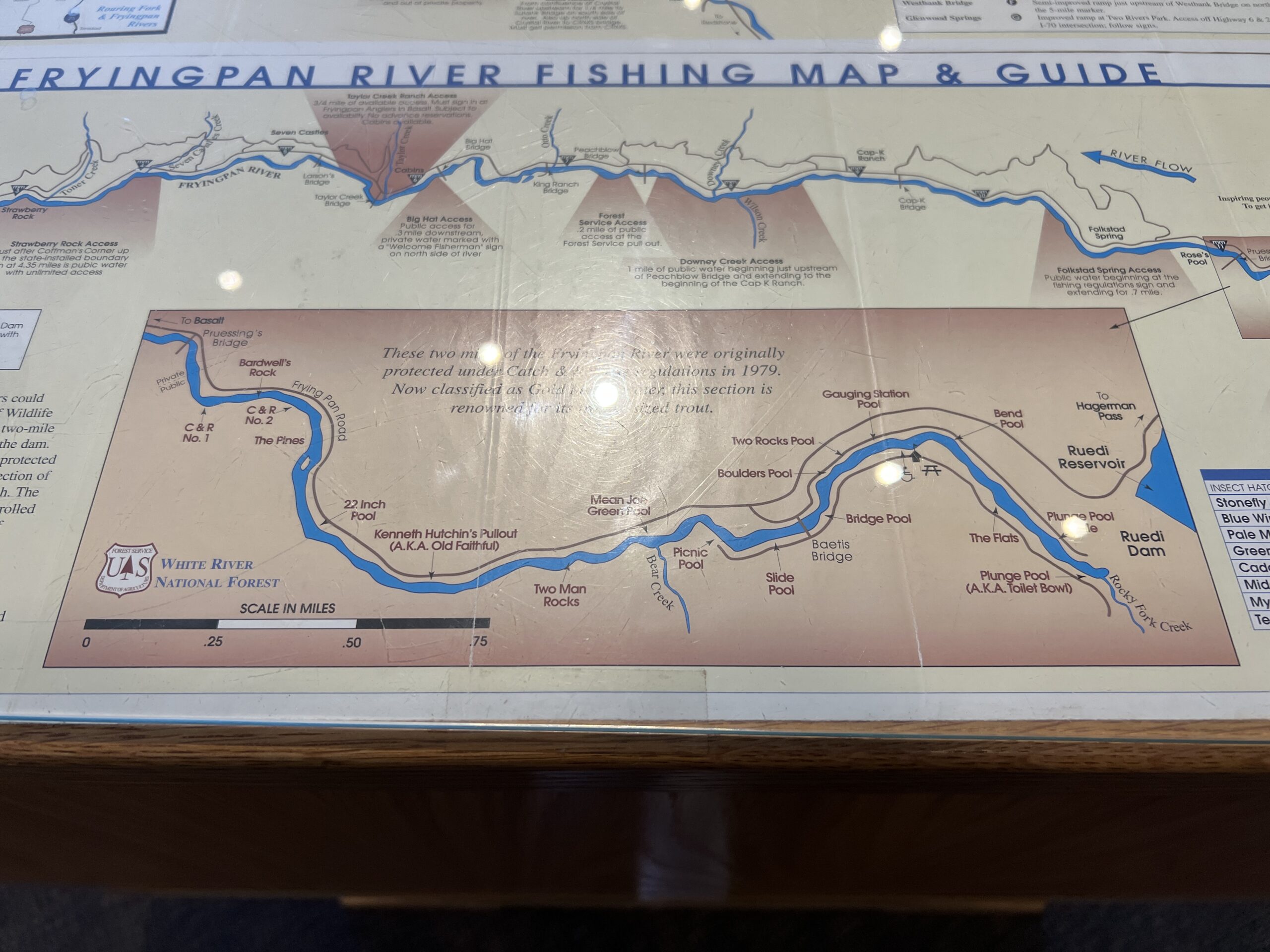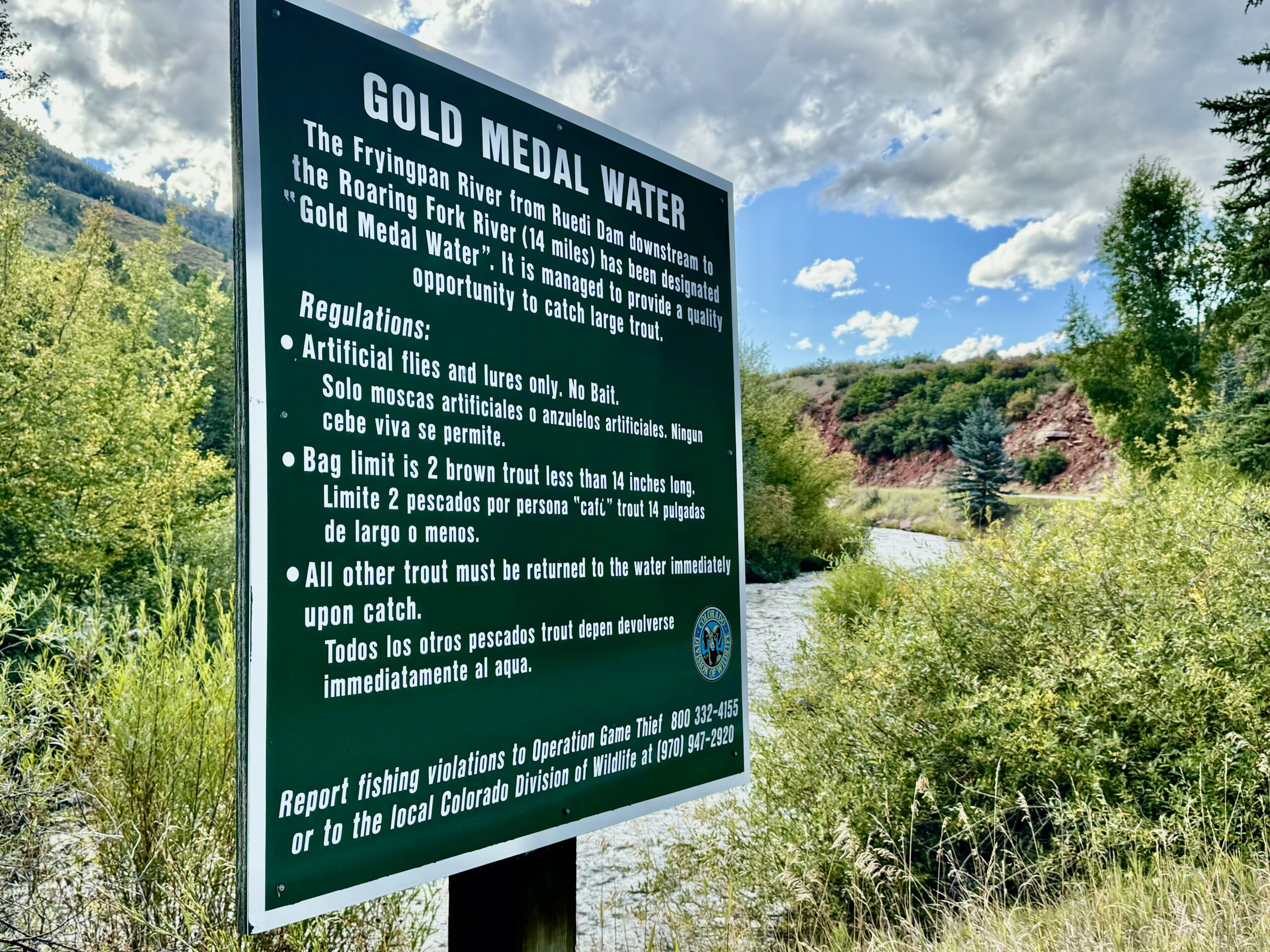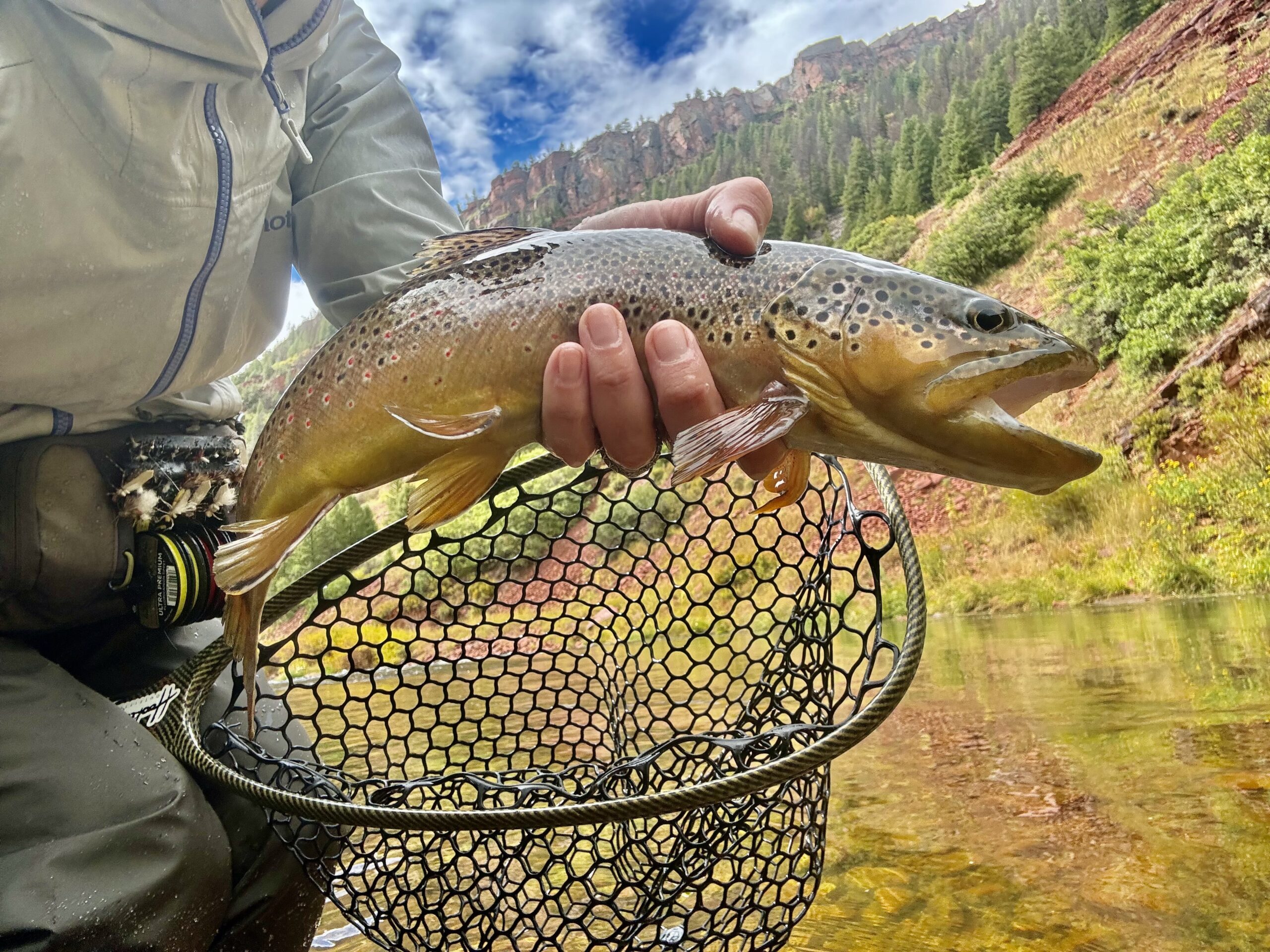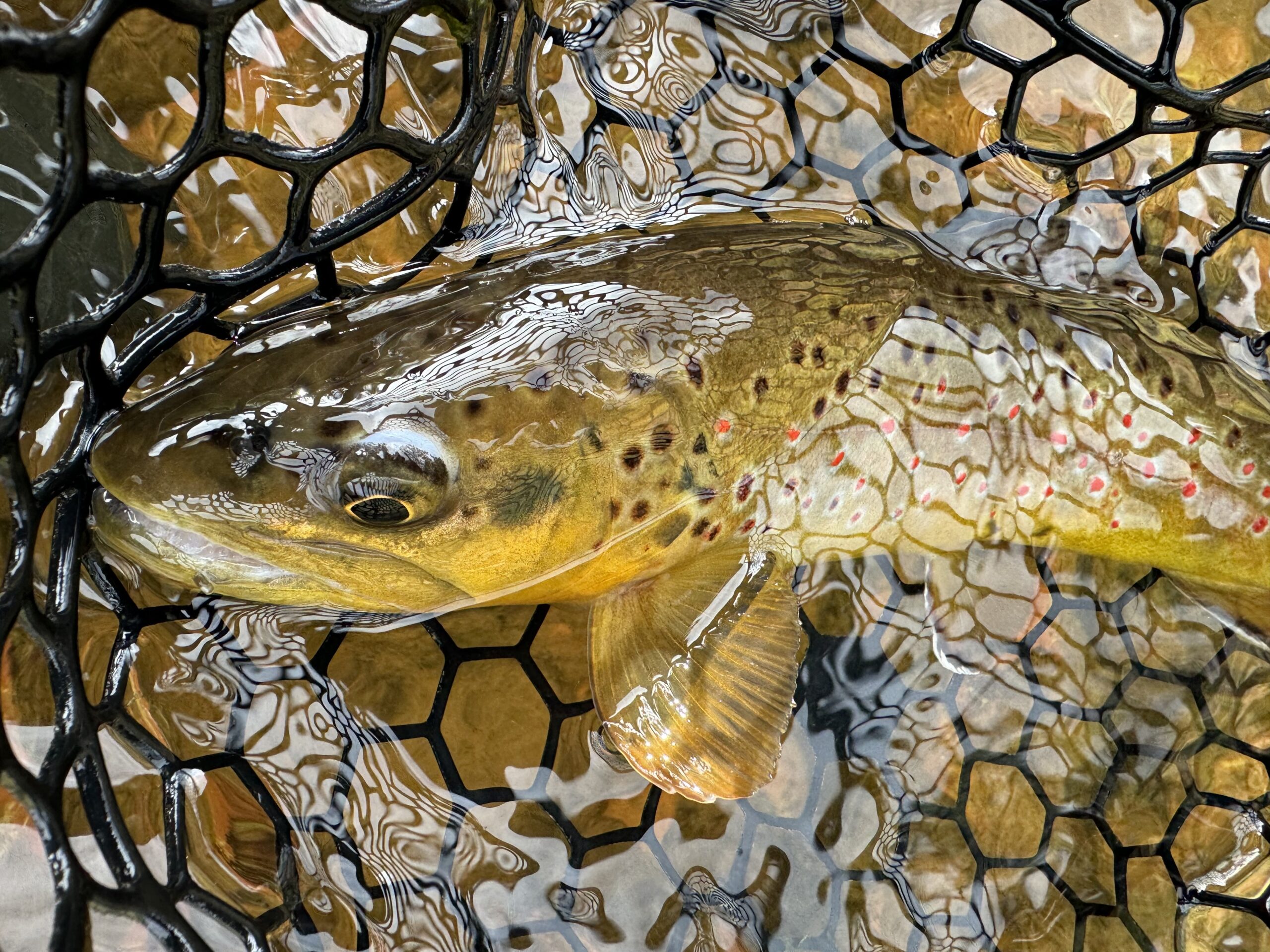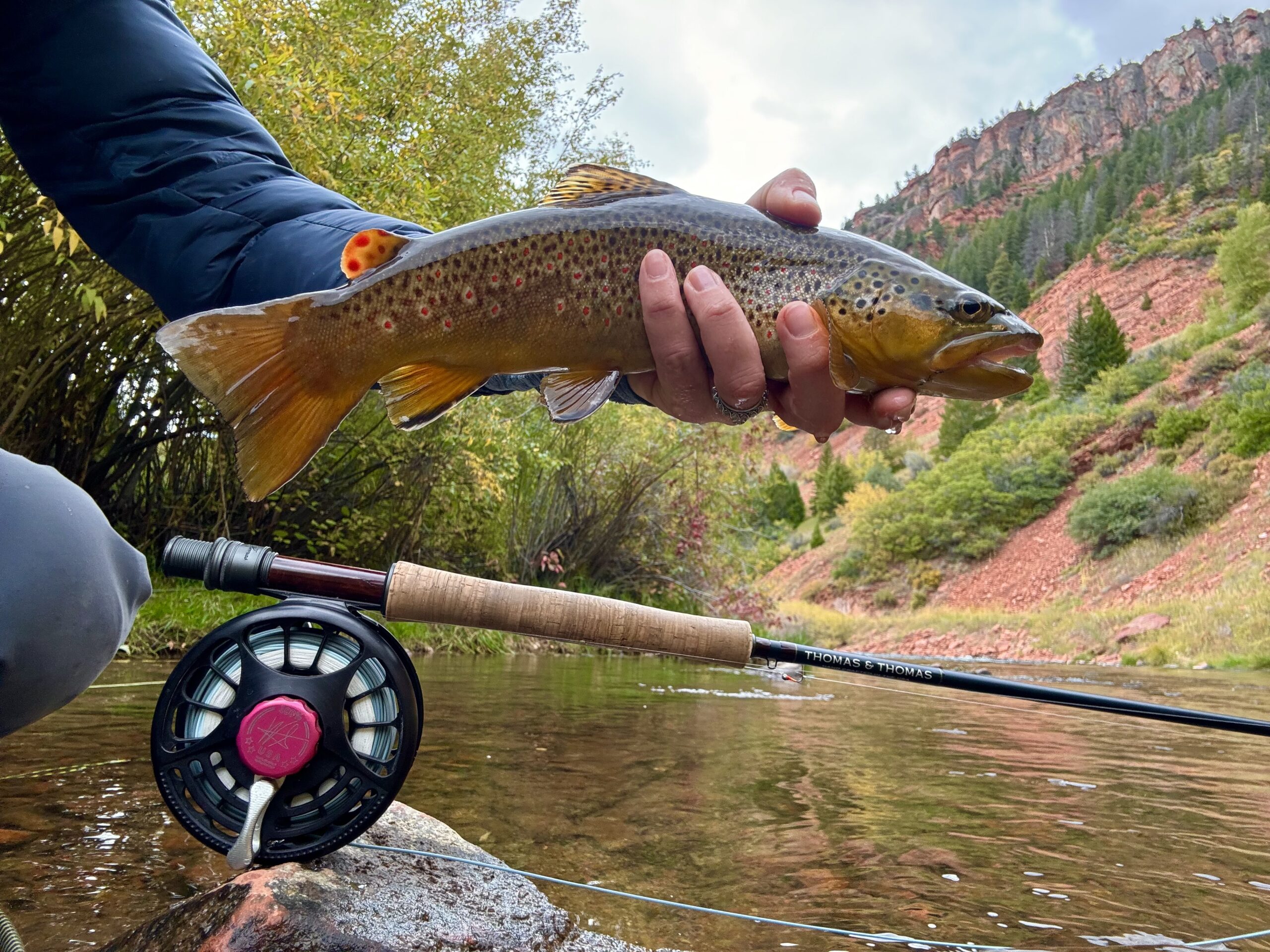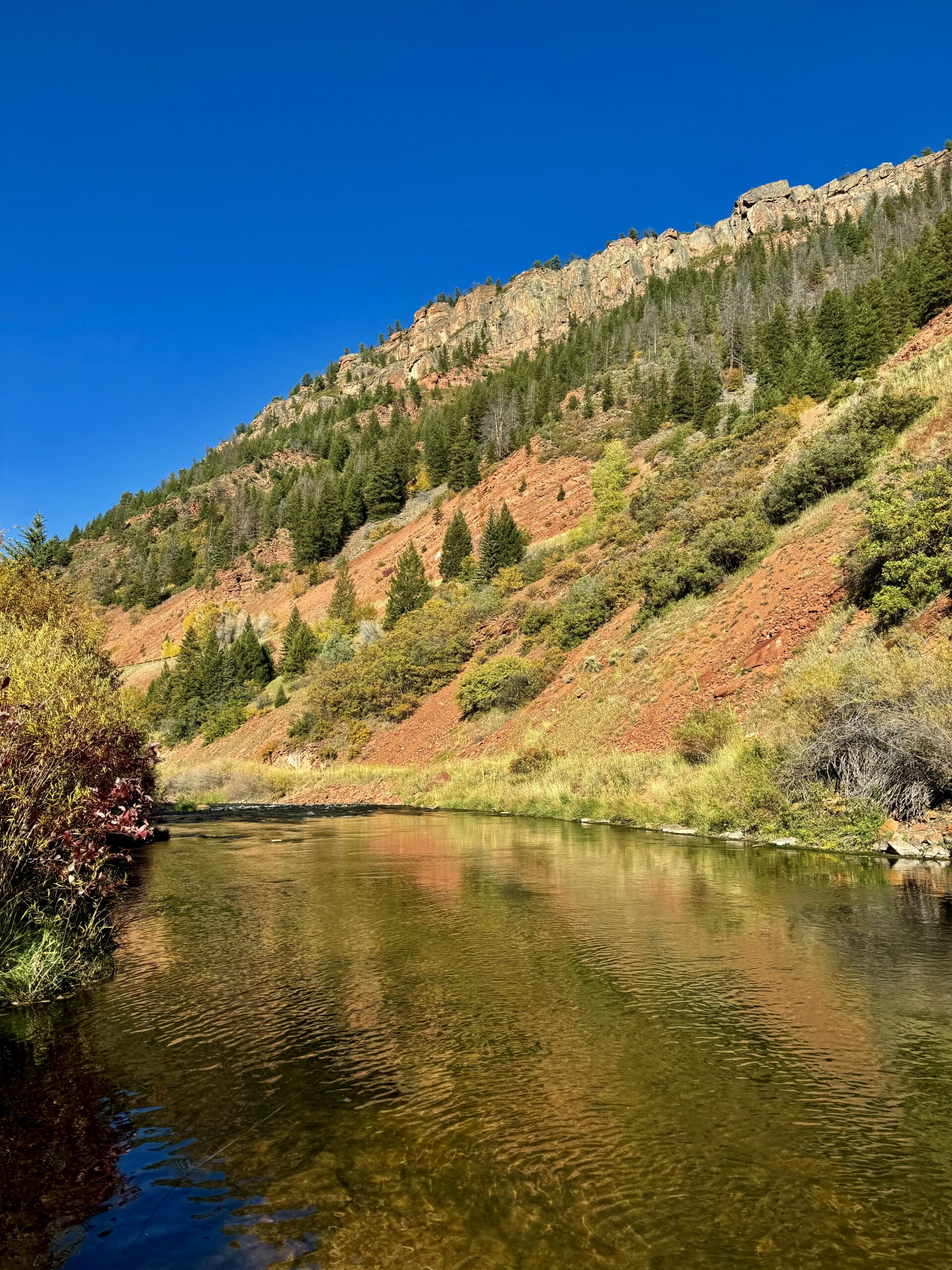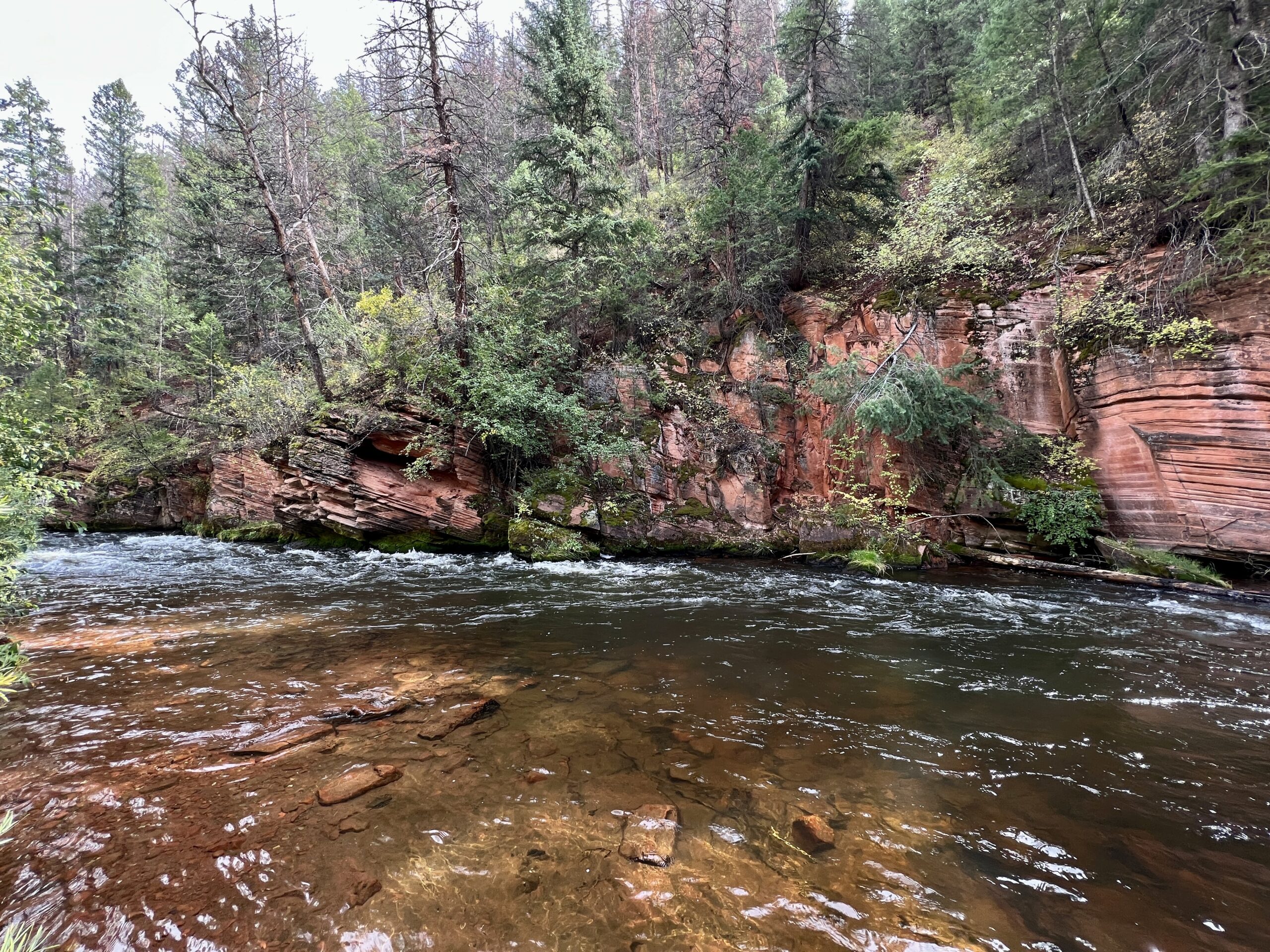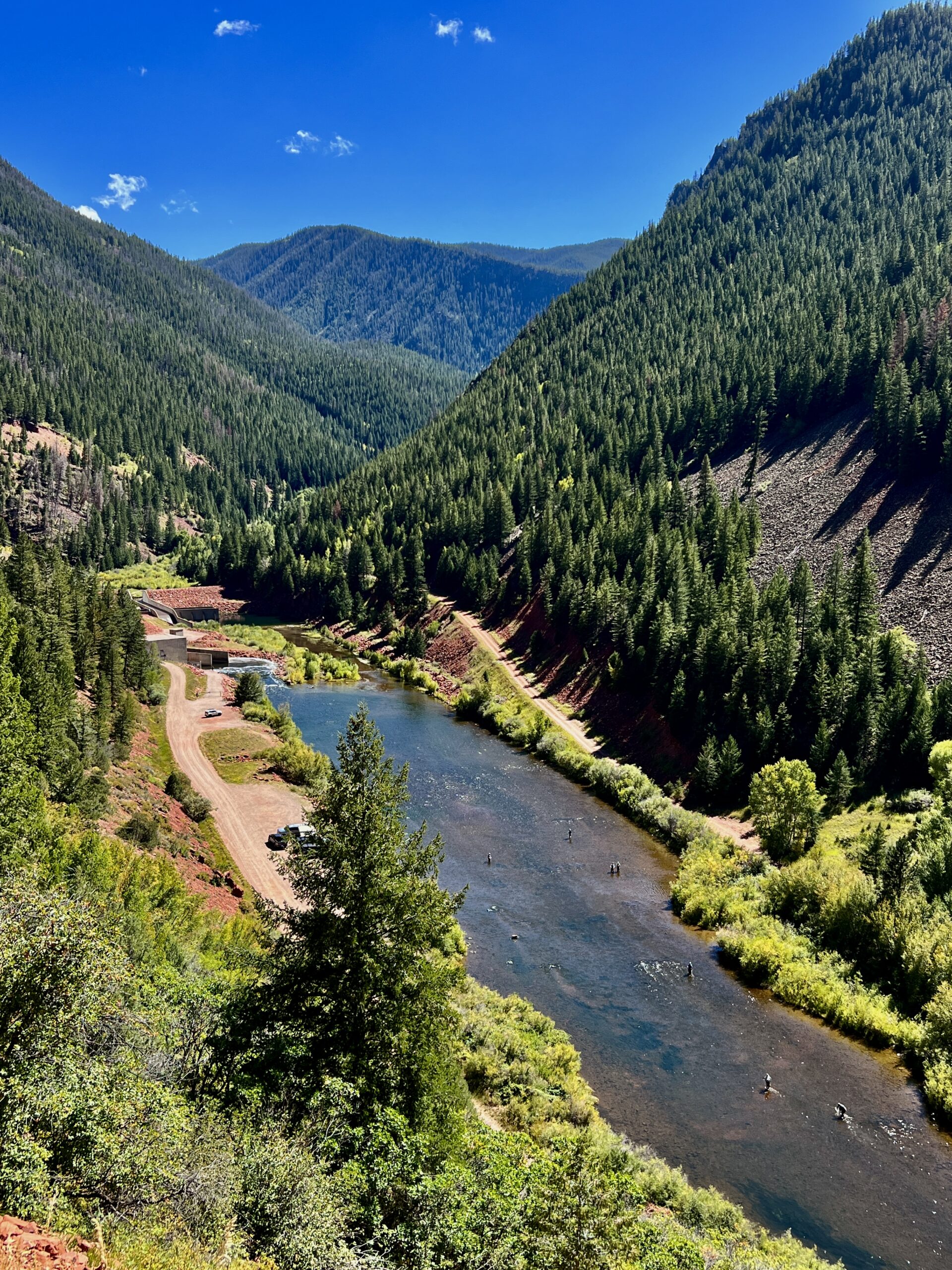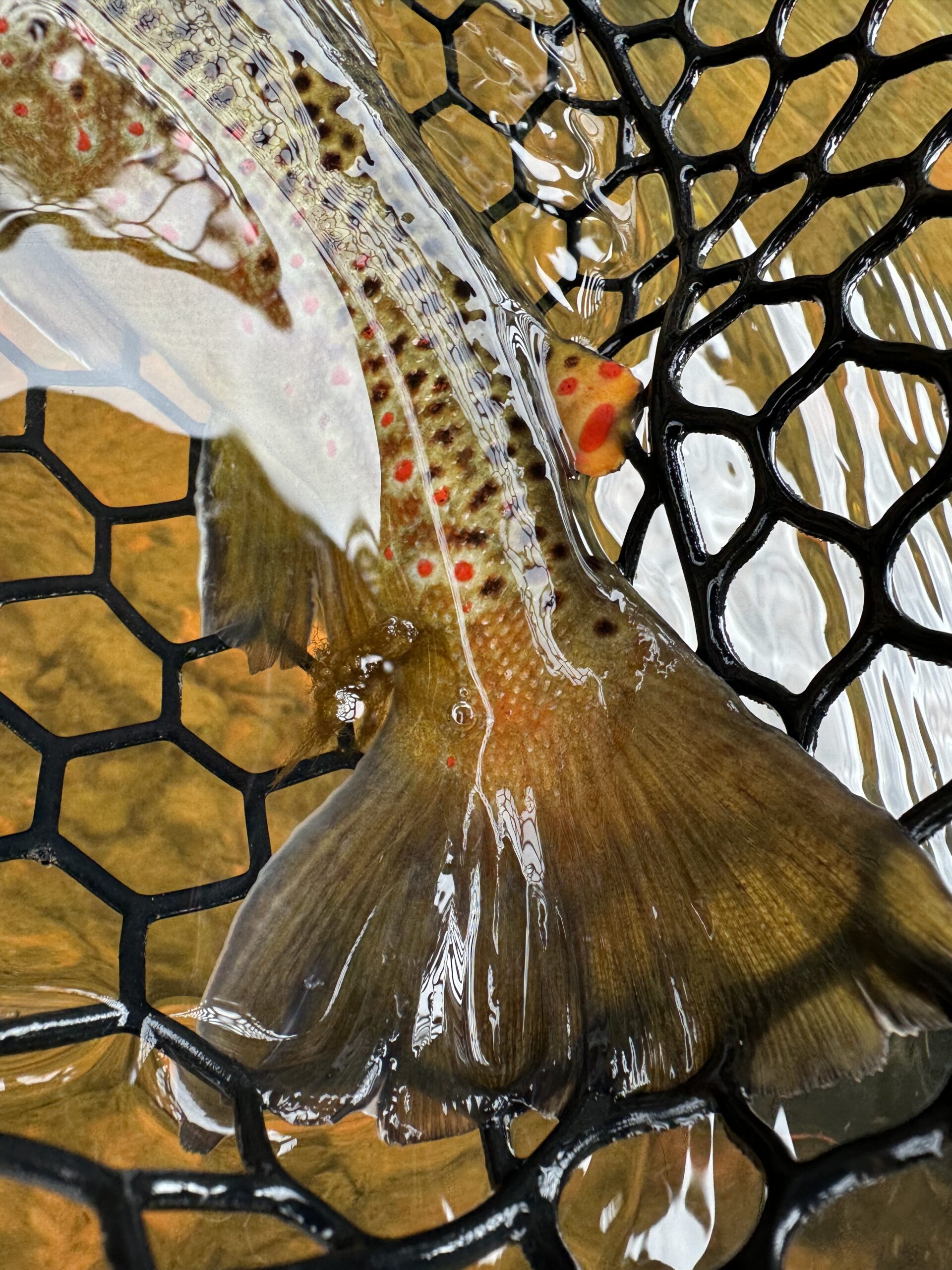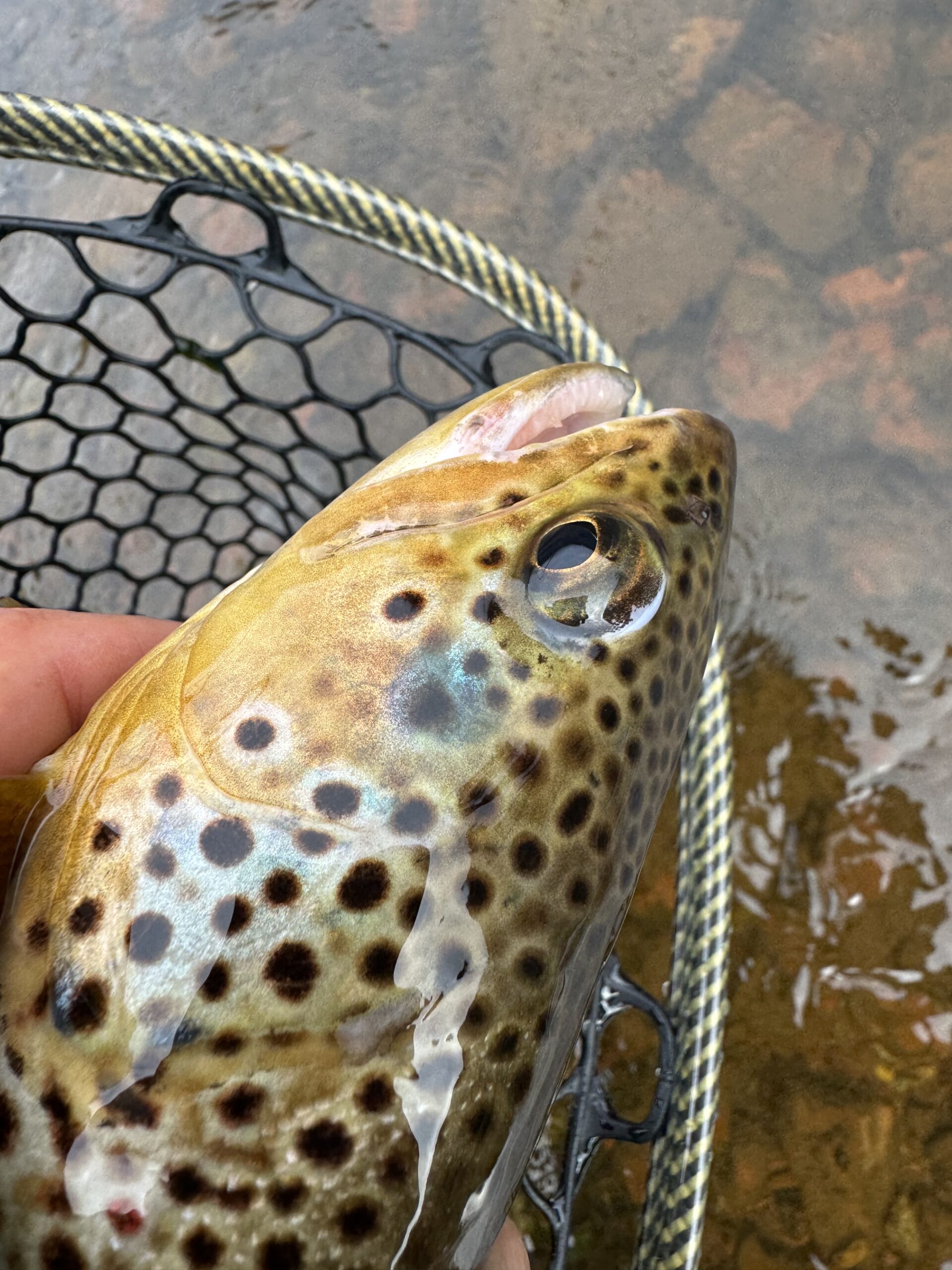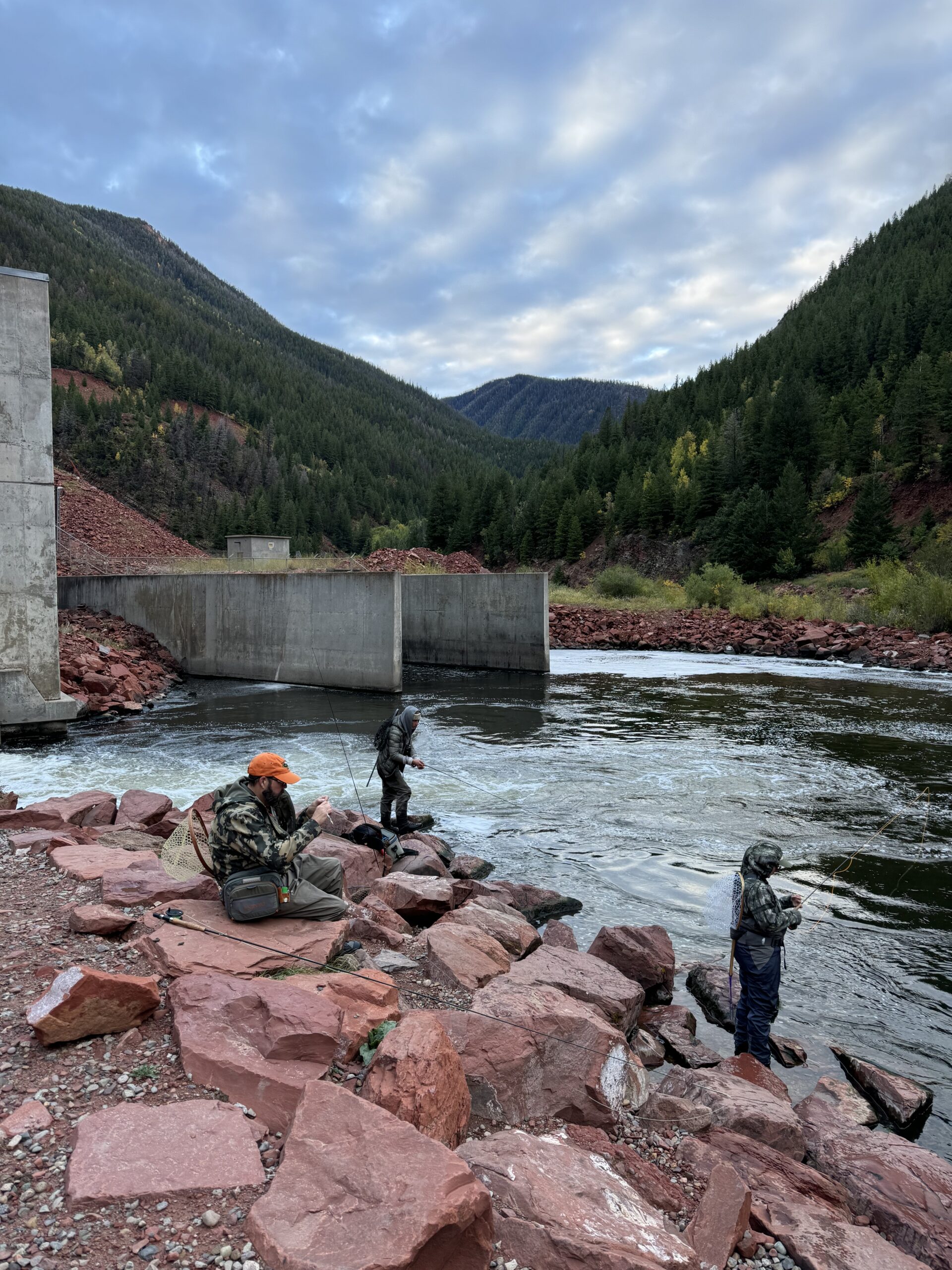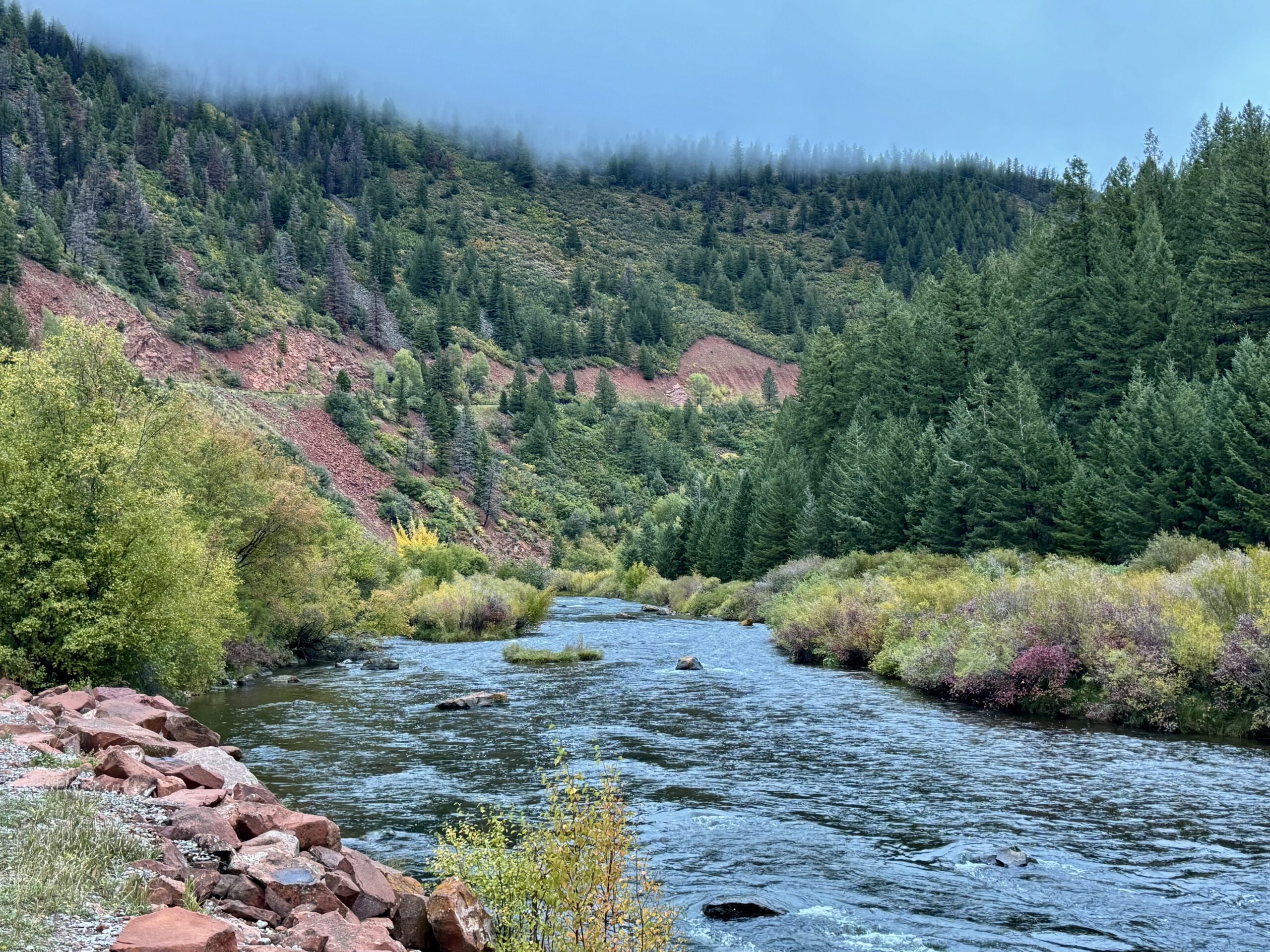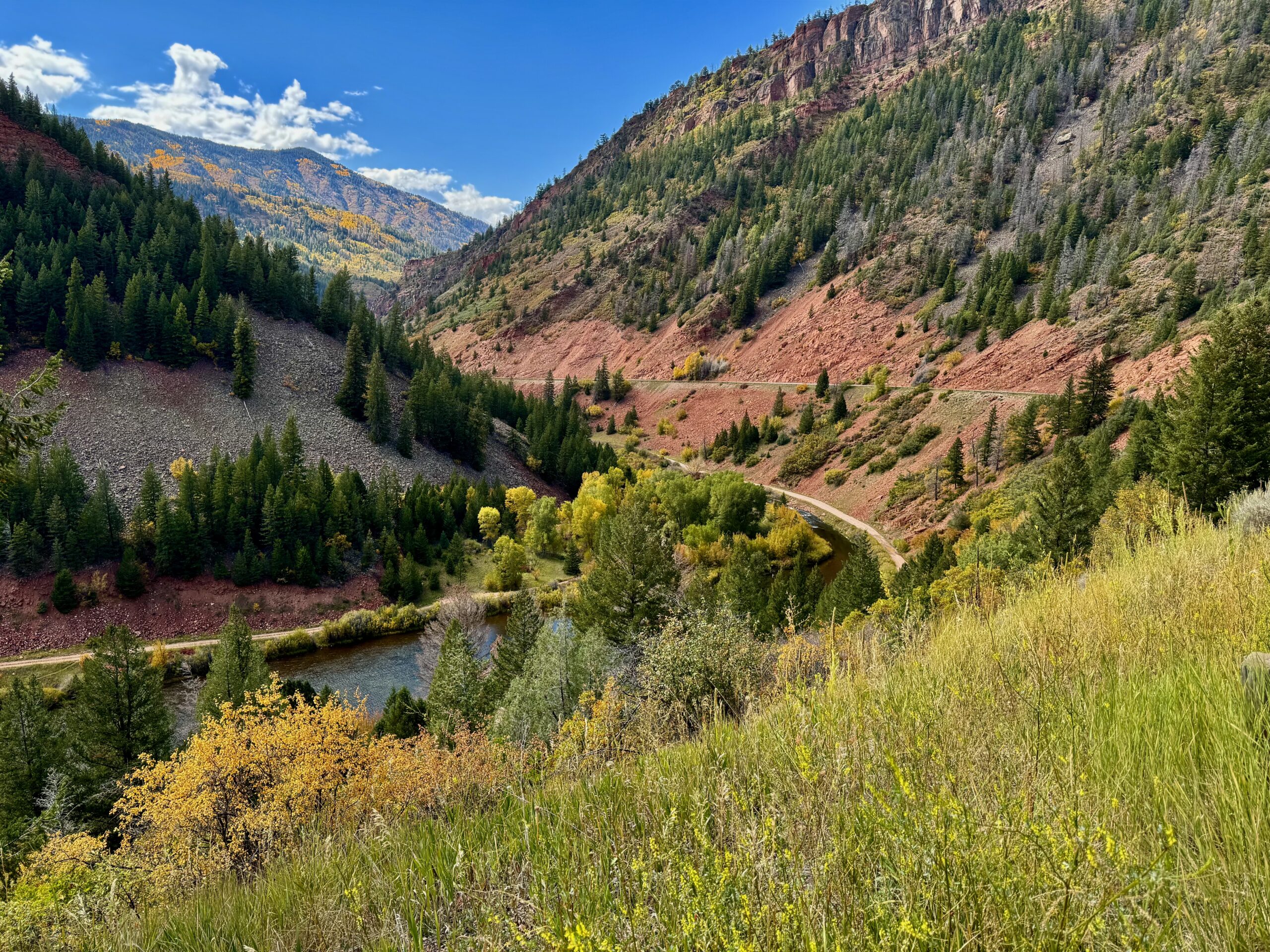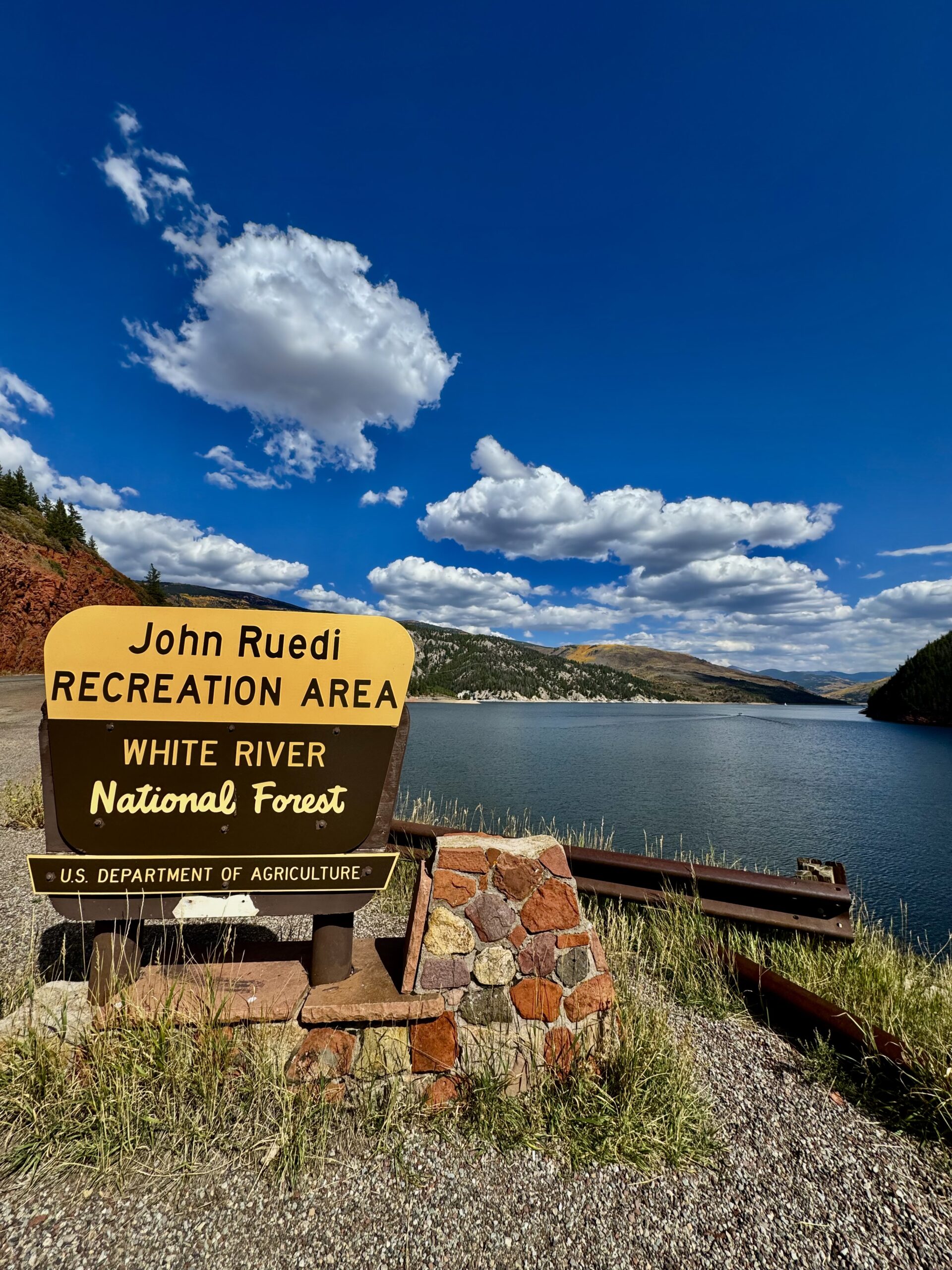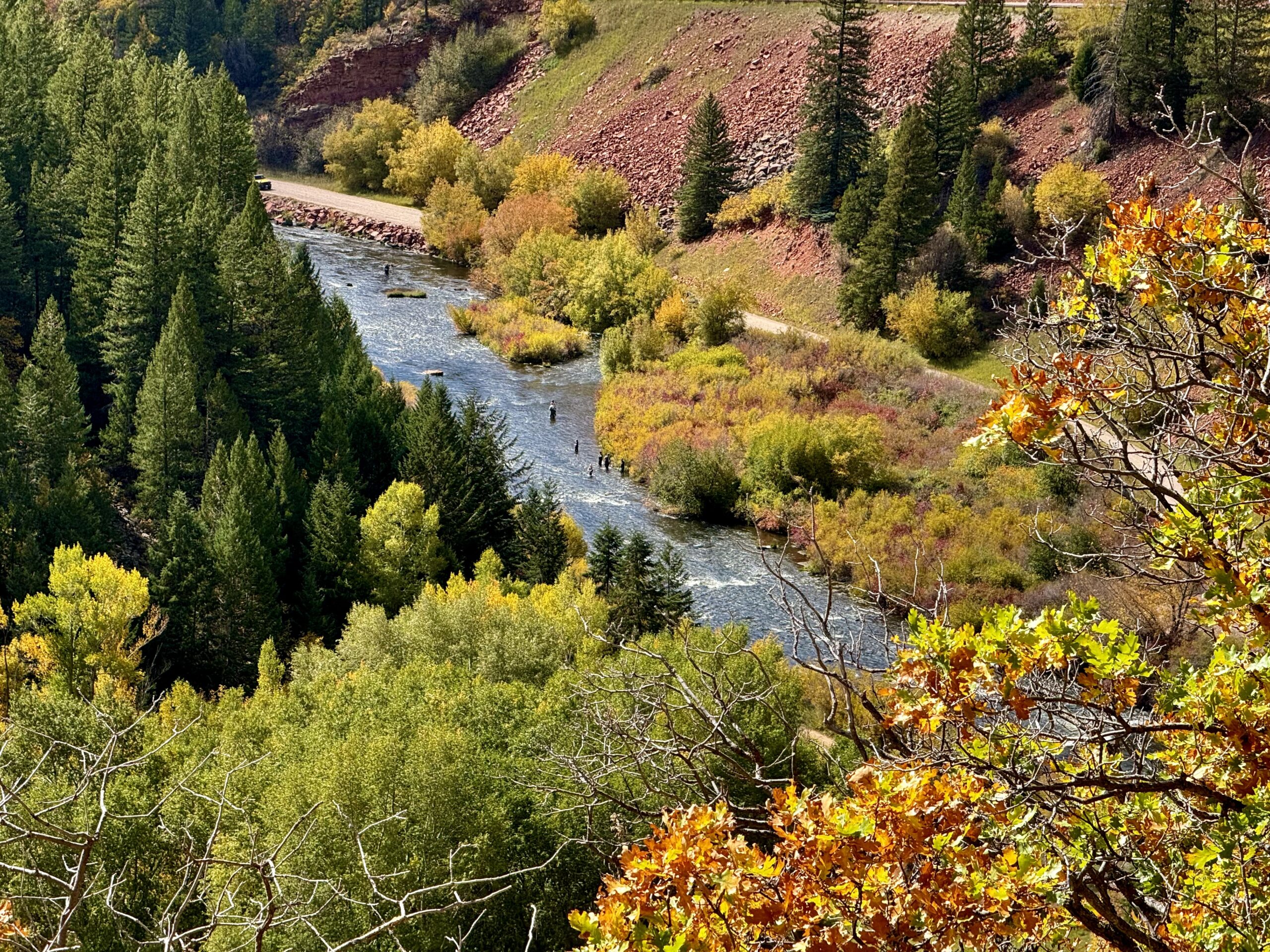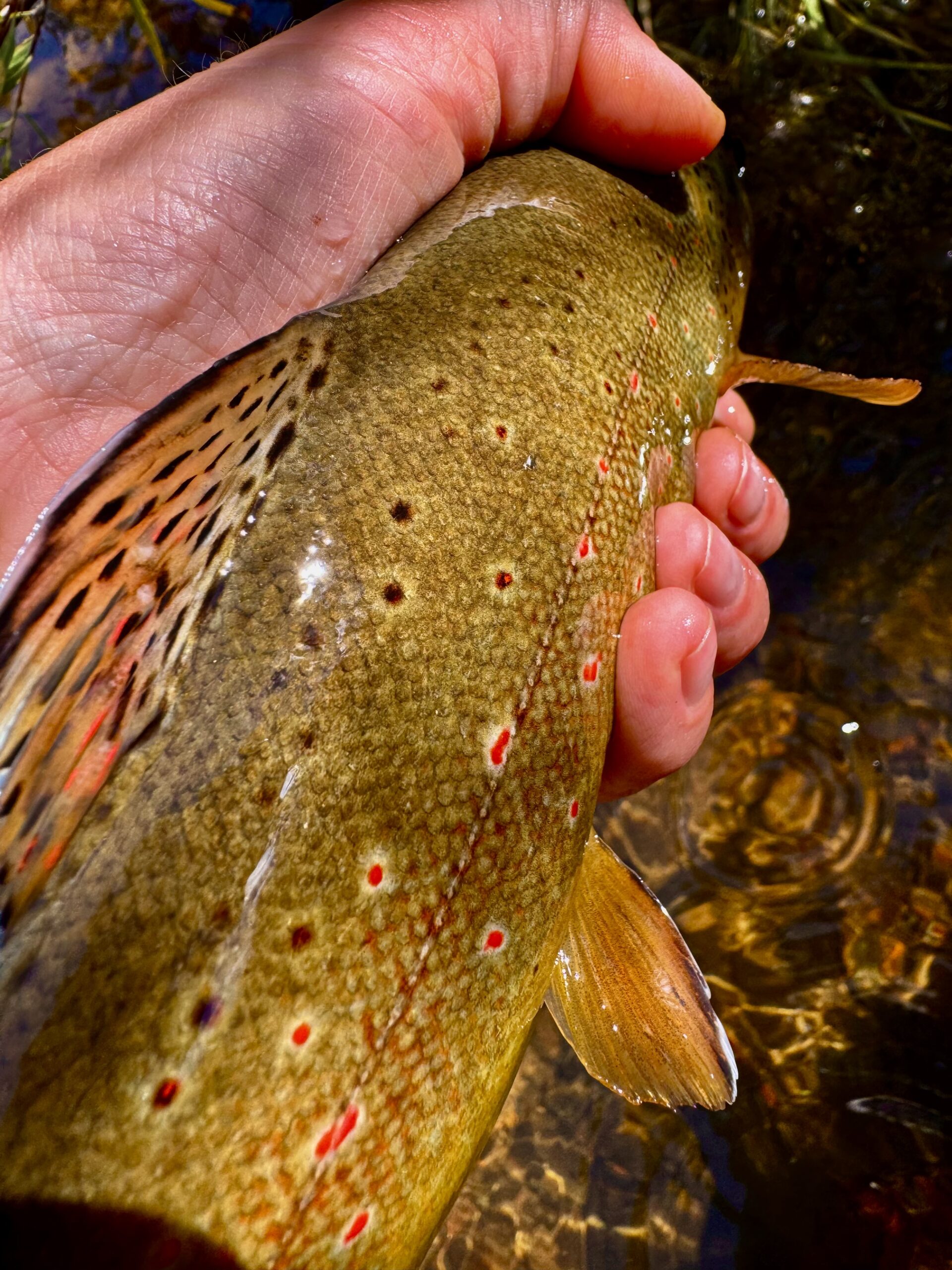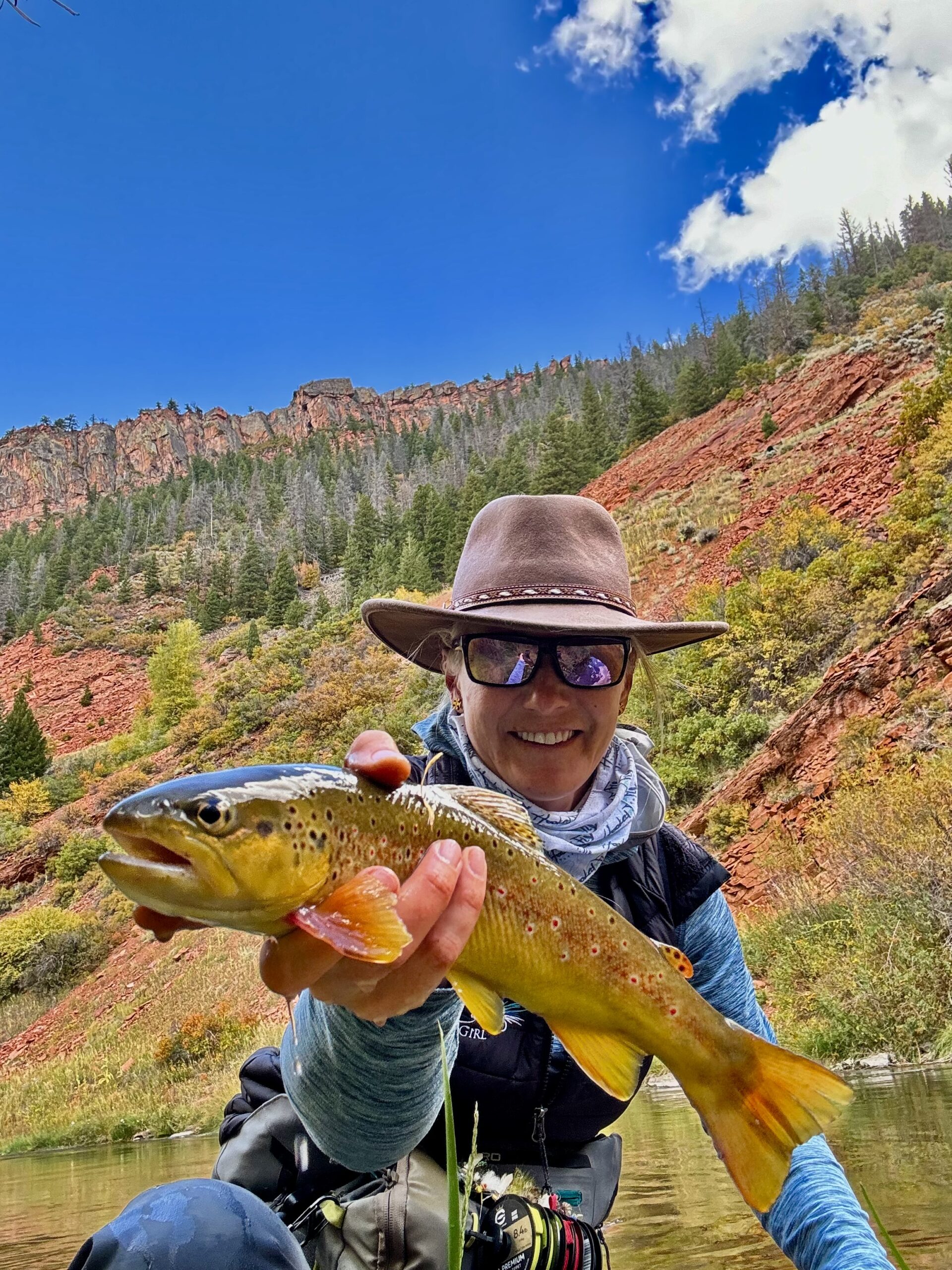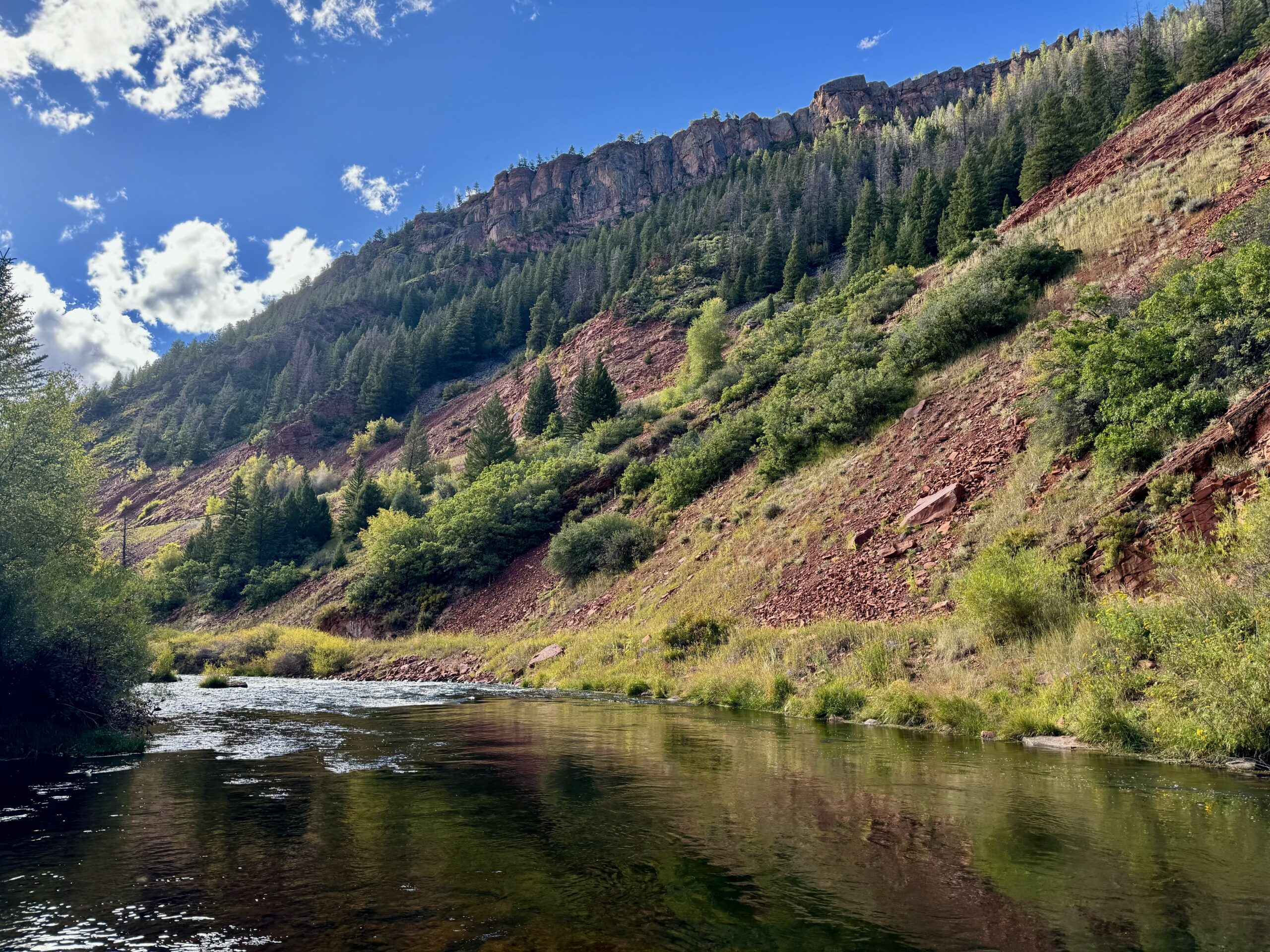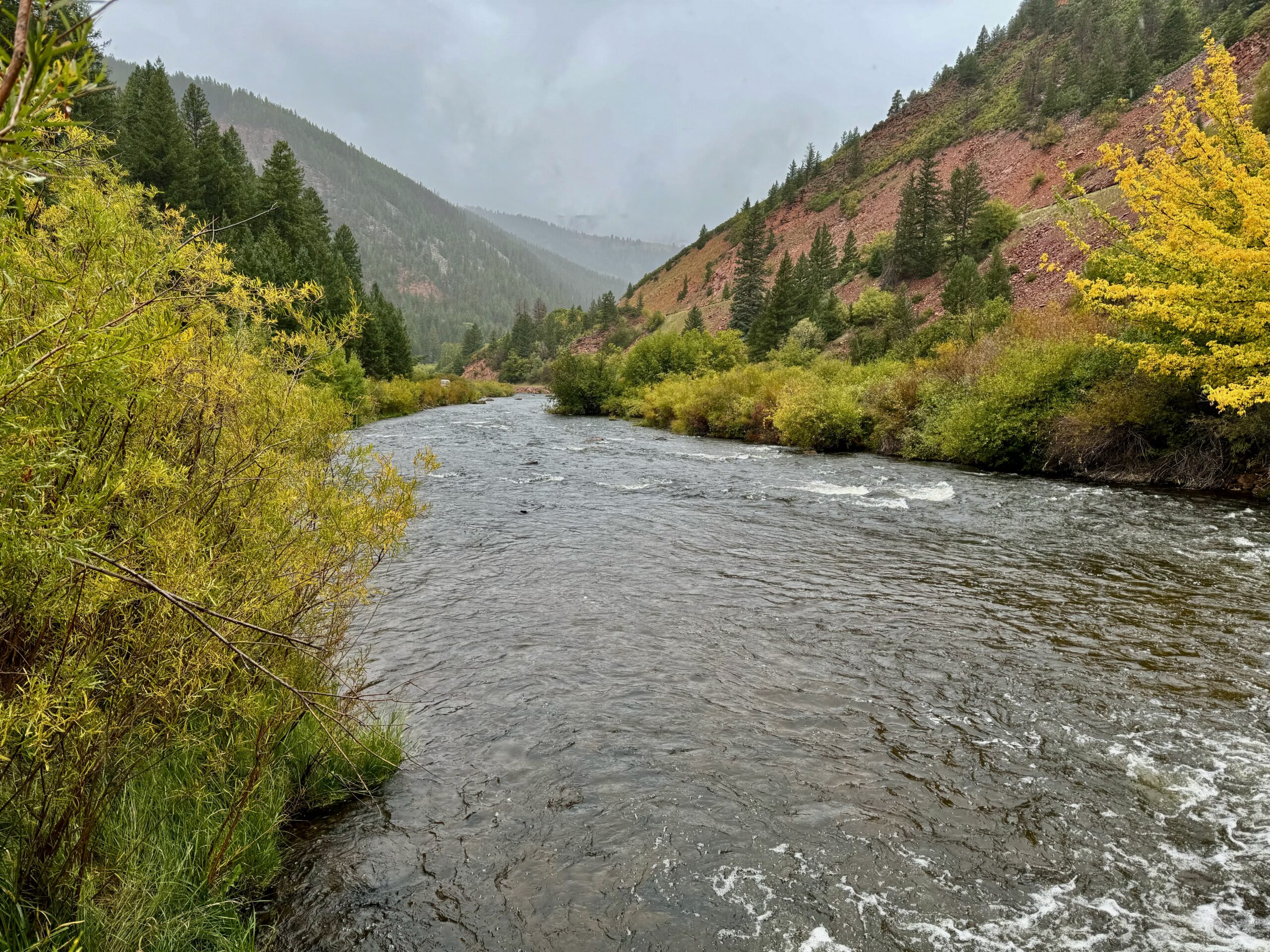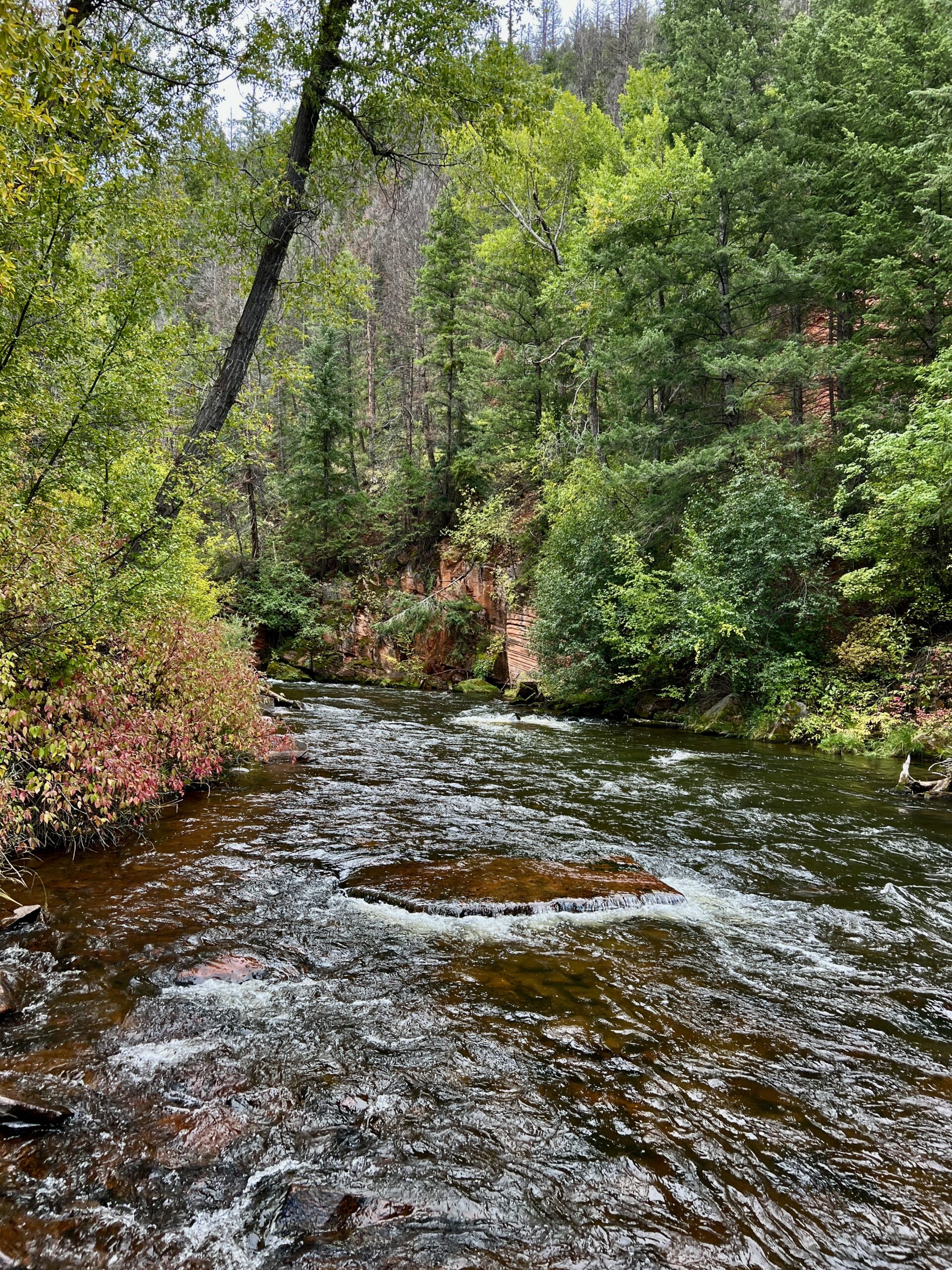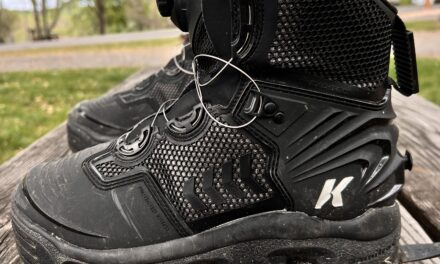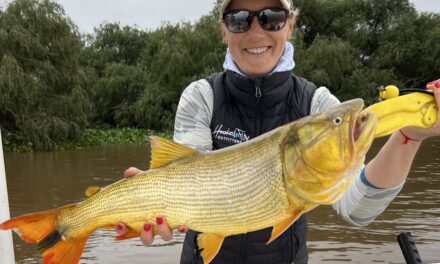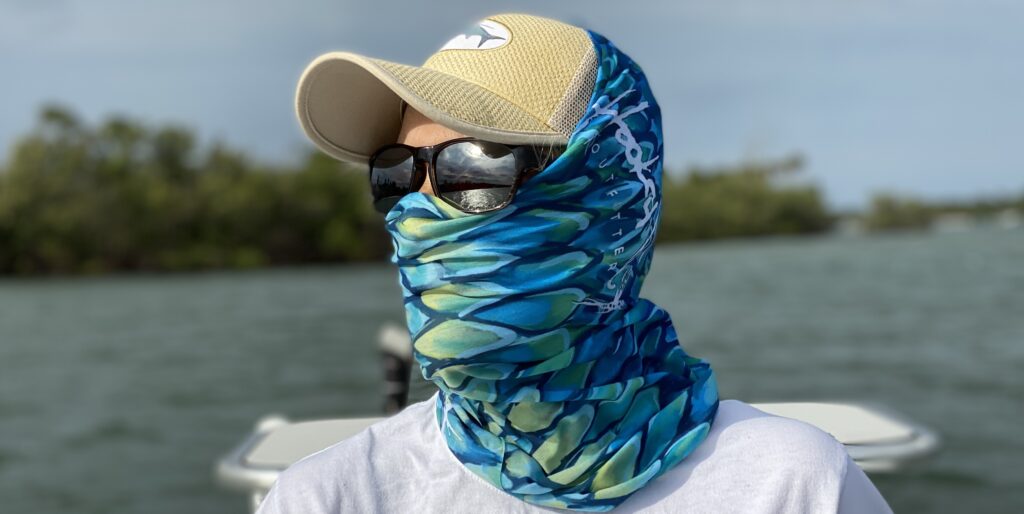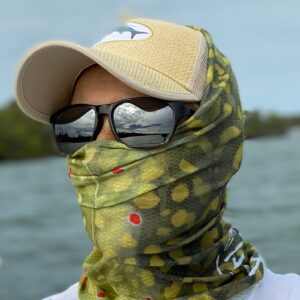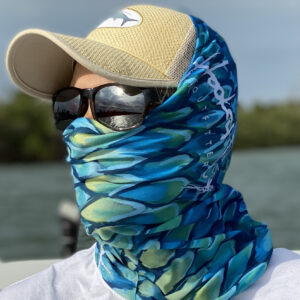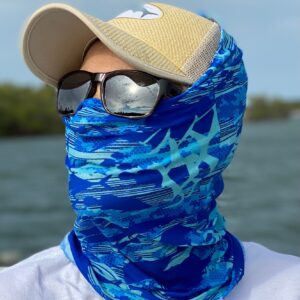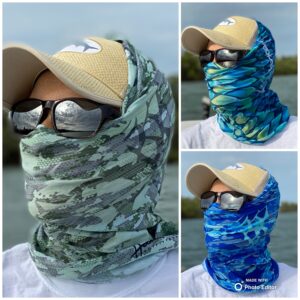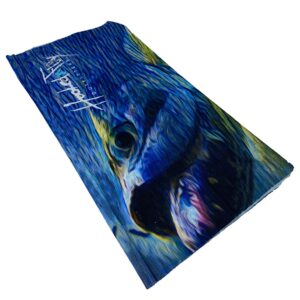Tucked away in the heart of the Rocky Mountains, the Fryingpan River in Basalt, Colorado, is a fly angler’s paradise. Just a 40-minute drive from Glenwood Springs, Colorado this pristine tailwater fishery flows from Ruedi Reservoir, offering year-round fishing and a chance to battle some of the largest trout in the West. The drive itself is a spectacle, winding through a breathtaking canyon that sets the stage for an unforgettable fishing experience. With crystal-clear waters, a dark riverbed that provides natural camouflage for trout, and a stunning red rock backdrop, the Fryingpan ranks among North America’s premier fly fishing destinations.
Driving through the canyon is a spectacular experience, with breathtaking views around every turn. And as a bonus, the river rewards anglers with vibrantly colored brown trout, making the journey just as exciting as the fishing itself.
Public vs. Private Access
The 14-mile stretch between Ruedi Dam and downtown Basalt consists of both public and private land, so understanding access points is essential.
- Public Access: The Gold Medal Waters below Ruedi Dam are prime fishing grounds, offering excellent chances to hook large rainbow and brown trout. While most of this stretch is open to the public, there are a few private sections mixed in, so stay aware of property lines.
- Private Sections: As you get closer to Basalt, private property becomes more common. Signage is highly visible, sometimes even placed in the middle of the river—so there’s no excuse for missing it. Colorado law allows anglers to float through private waters, but anchoring or wading on private land is strictly prohibited.
If you’re unsure about access points, stop by a local fly shop in Basalt for the latest updates on river conditions, hatches, and land ownership boundaries.
Do not recommend casting the line past this sign!
A Tailwater Like No Other
The Fryingpan’s consistent water flows and stable temperatures—courtesy of Ruedi Dam releases—create an ideal habitat for trout. As a result, the river is home to massive rainbows (many exceeding 10 pounds) and strong populations of brown trout, with the occasional cutthroat.
The Gold Medal Waters are particularly famous for sight-fishing opportunities, where anglers can target large, feeding trout in gin-clear water. The insect-rich environment makes for incredible dry fly action—perfect for those who love the visual thrill of a rising fish.
That said, be prepared for crowds. Like any legendary fishery, the Fryingpan gets heavy pressure, especially in summer. Limited access due to private land means anglers camp out in prime spots all day, targeting the same fish repeatedly. If you prefer solitude, avoid peak summer months. My favorite time to fish here is late September through December when the crowds thin out.
Also, respect etiquette! I’ve had people drop in on a riffle I was fishing, ignoring the unwritten rule: if someone is fishing below a riffle, they’re likely working their way up to it. Don’t be that person—give others space.
Little too close for my confort dont you think?
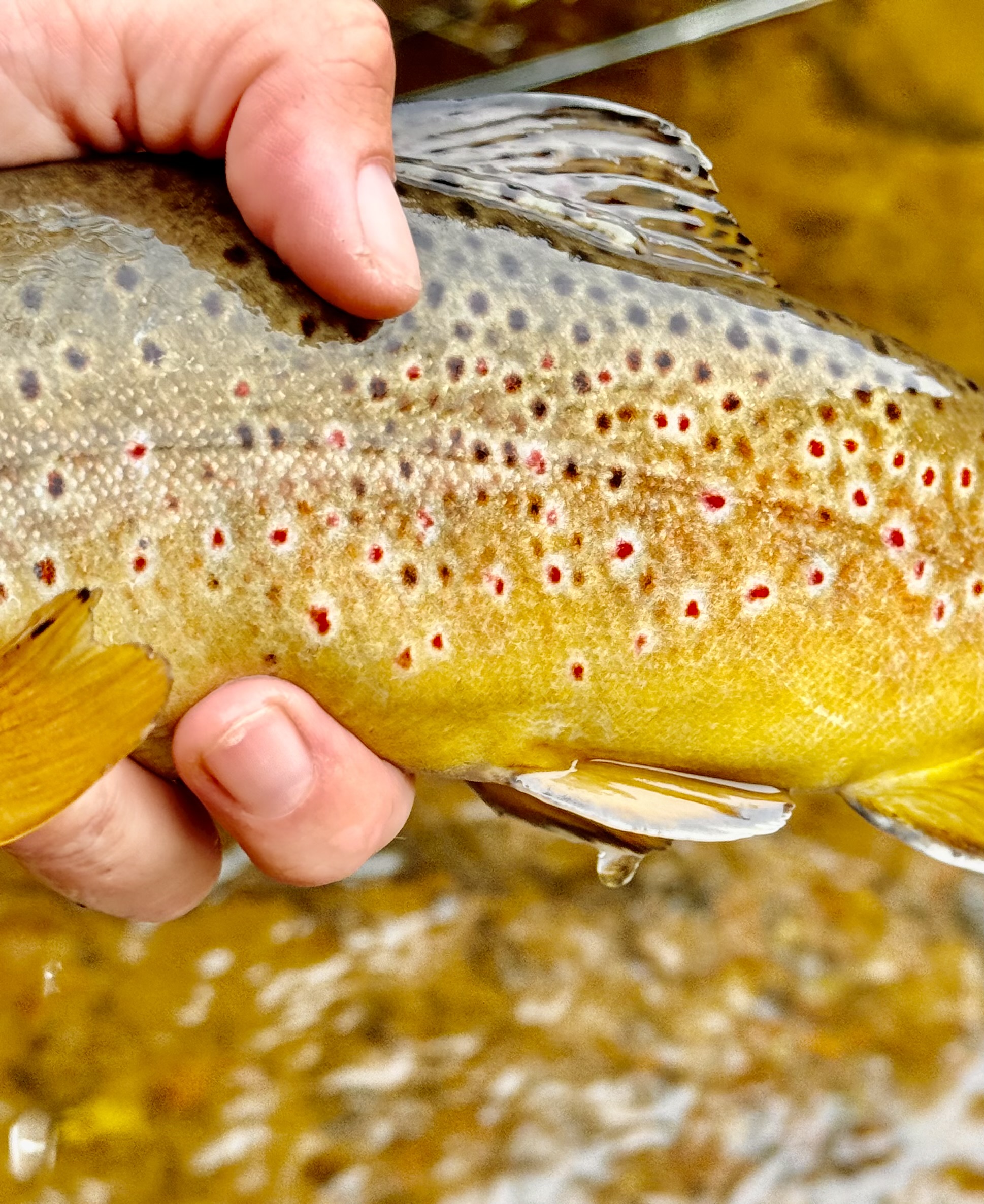
The Magic of the Hatch
What makes the Fryingpan truly special is its legendary insect hatches, which keep fish feeding year-round. Some of the most significant include:
- Mysis Shrimp: The most famous hatch, these high-protein shrimp flush from Ruedi Reservoir, fueling the incredible growth of the river’s trout. Fishing a well-presented mysis pattern near the dam can produce some of the largest rainbows you’ll ever see.
- Blue-Winged Olives (BWOs): These mayflies hatch consistently throughout the year, with peak activity in spring and fall.
- Green Drakes: In summer, this hatch creates some of the most exciting dry fly fishing opportunities.
- Midges: The winter staple. Tiny midge patterns (size 22–24) are a must-have when fishing this river.
Matching the hatch is critical. The Fryingpan’s trout are highly selective, often feeding on size 20-24 flies. Anything larger is a recipe for frustration.
Fishing the Fryingpan: Tips for Success
To make the most of your time on this incredible river, keep these tips in mind:
- Use light tippets and small flies. A 6x or 7x tippet is often necessary to fool these educated trout.
- 3-5 wt rod, matching reel and fly line.
- Always go small on flies size 20-24.
- Sight-fish whenever possible. With clear water, you can often spot trout before casting. Polarized sunglasses (Bajío’s, of course!) help cut glare and locate fish.
- Check water flows before your trip. Releases from Ruedi Dam affect fishing conditions.
- Fish early or late in the day. The best dry fly action happens in the mornings and evenings when hatches peak.
- Stop by a local fly shop. Frying Pan Anglers in Basalt always provides great advice on hatches, flows, and fly selections. If it’s your first time here, consider hiring a guide to get dialed in quickly.
The best day I ever had on the Fryingpan River was in freezing conditions, with pouring rain and even a bit of sleet mixed in. Miserable weather for most, but absolute perfection for fishing.
Fishing Access Points on the Fryingpan River
- Basalt (Confluence with Roaring Fork)
- Public access begins near the confluence.
- Several pull-offs along Frying Pan Road (County Road 104).
- Rocky Fork Day Use Area
- A few miles upstream from Basalt.
- Good deep pools for trout.
- Seven Castles Area
- Named after nearby red rock formations.
- Eagle’s Nest Area
- Several deep pools and riffles.
- Baetis Bridge / Bend Pool
- Prime dry fly fishing spot, especially during hatches.
- Toilet Bowl (Below Ruedi Dam)
- One of the most famous spots on the river.
- Large trout and consistent hatches.
